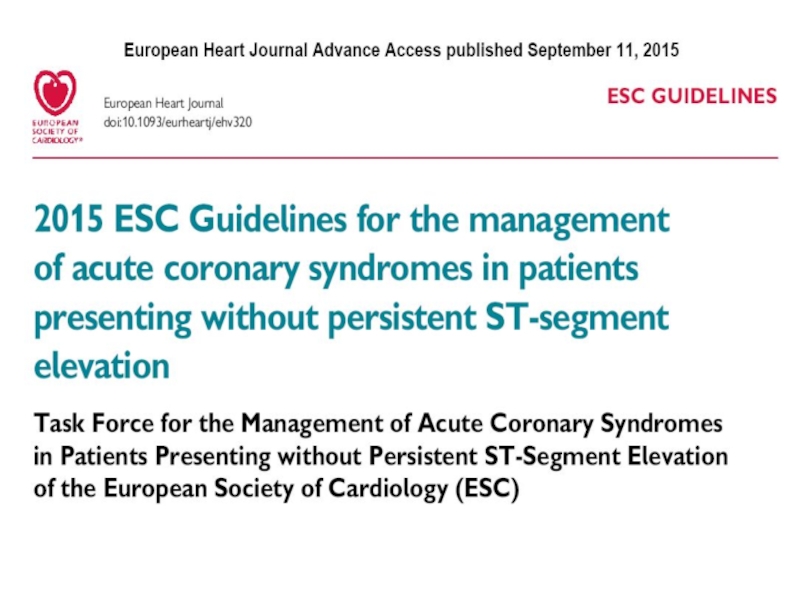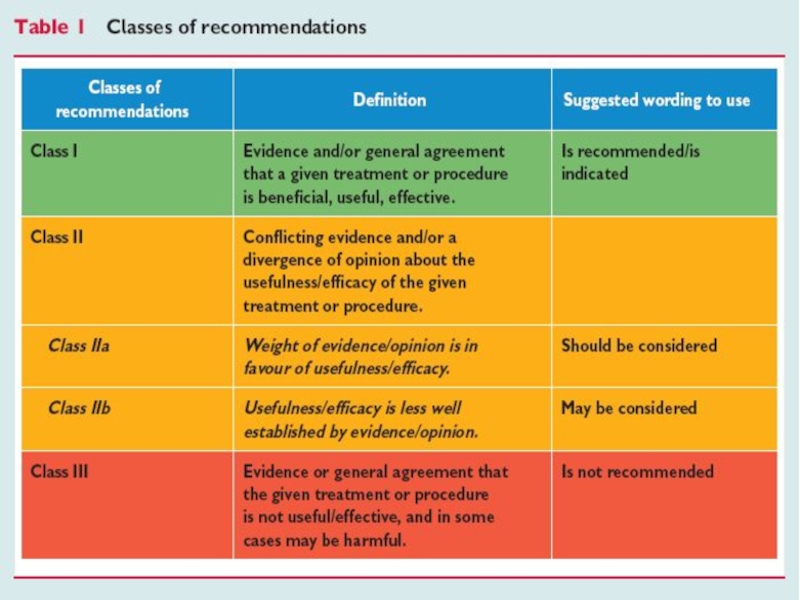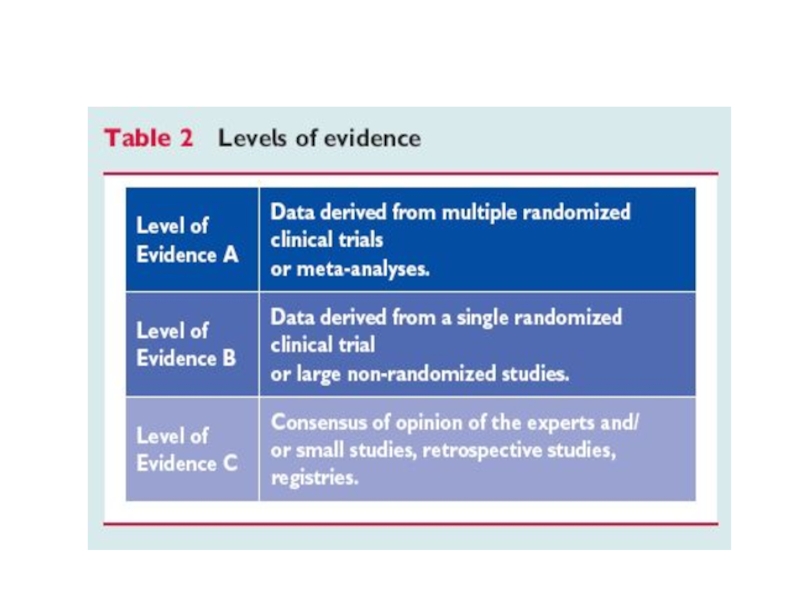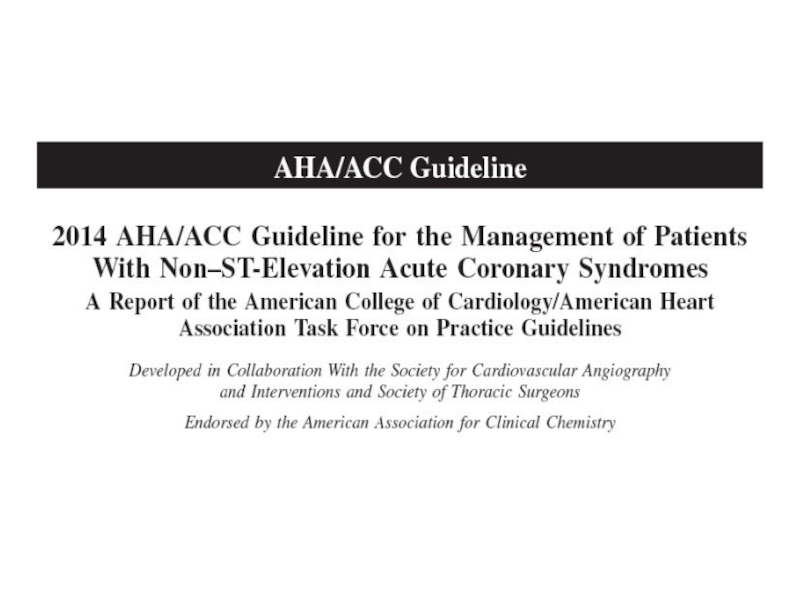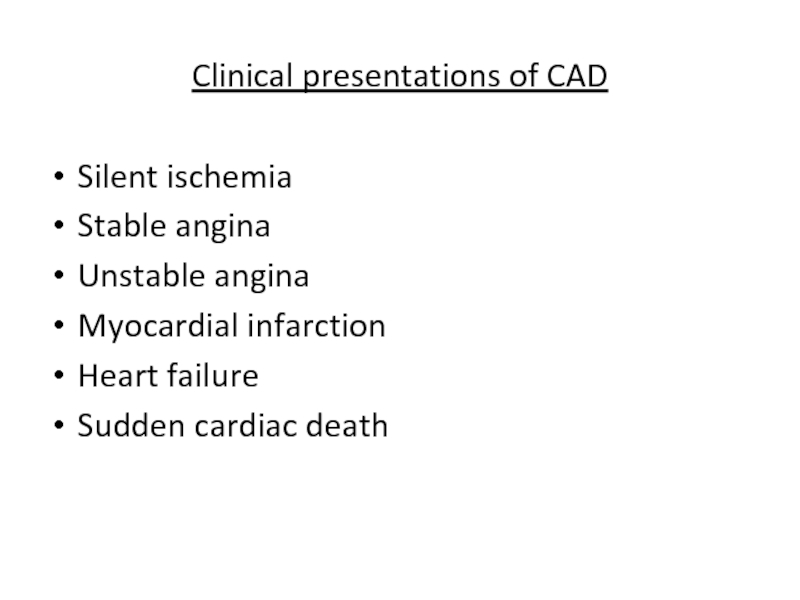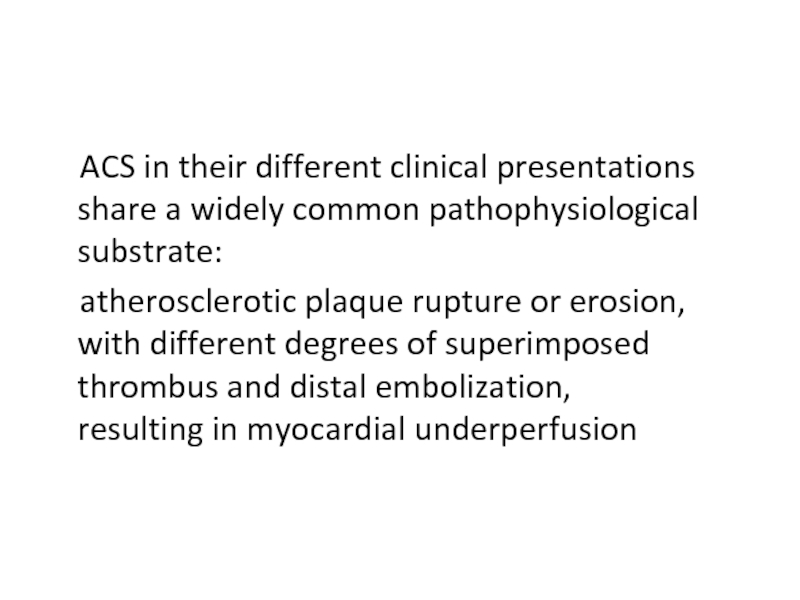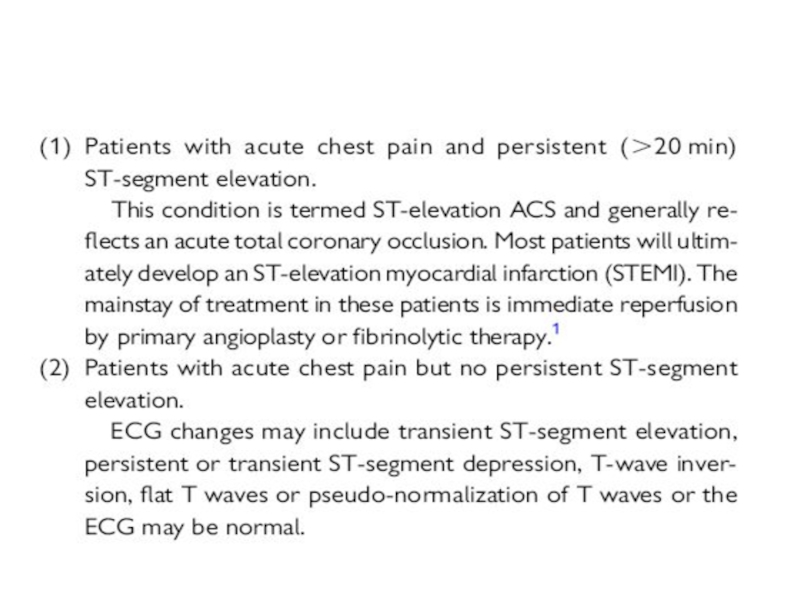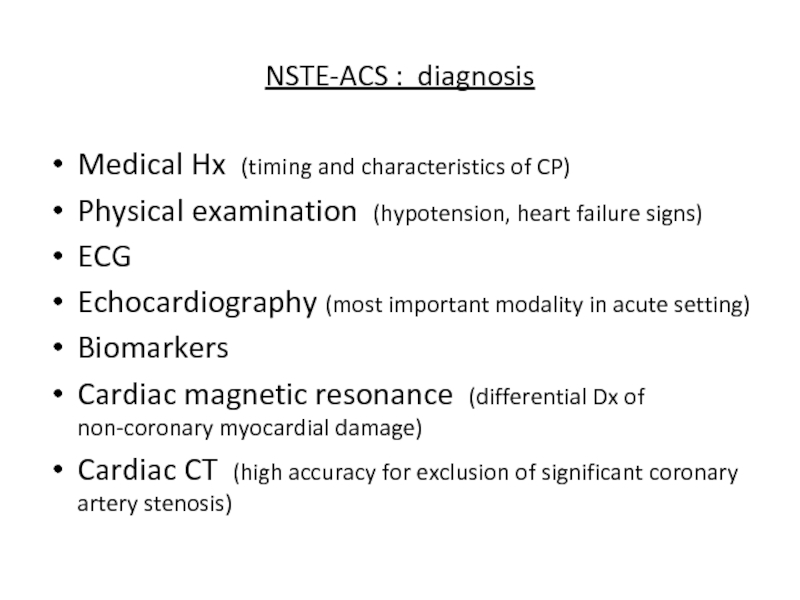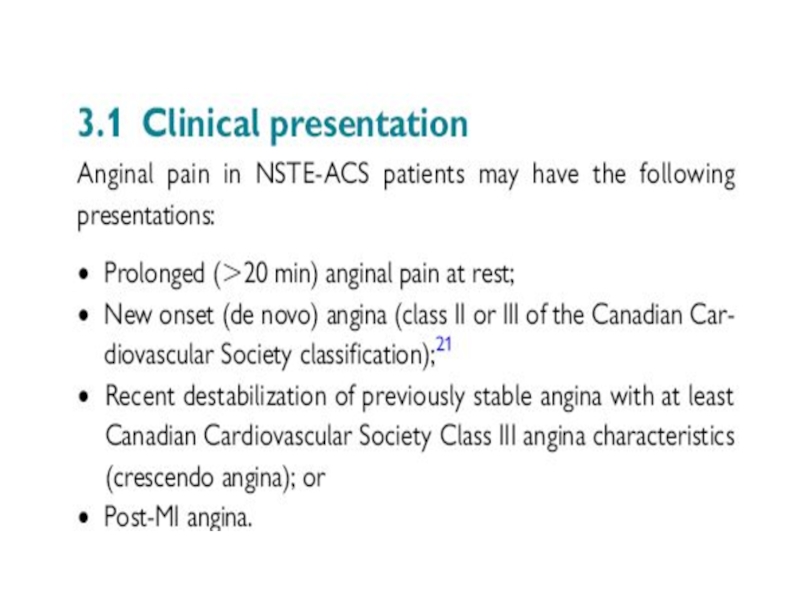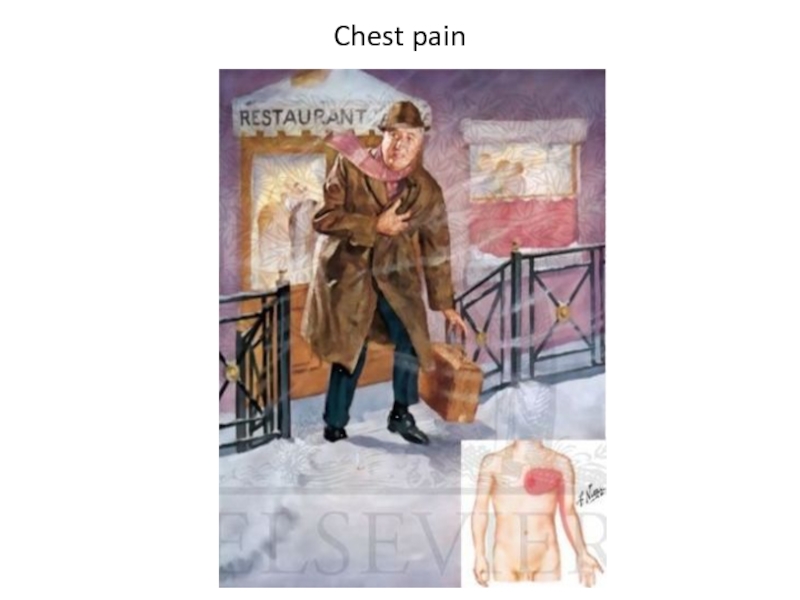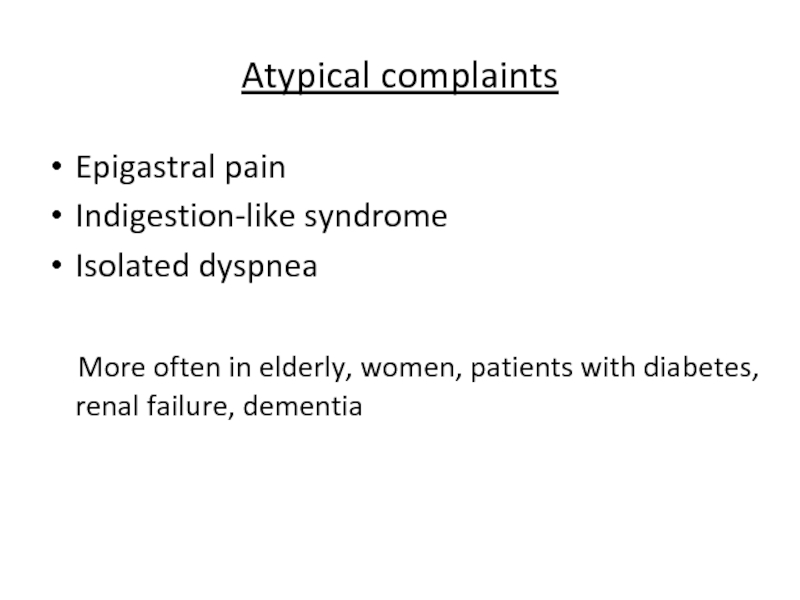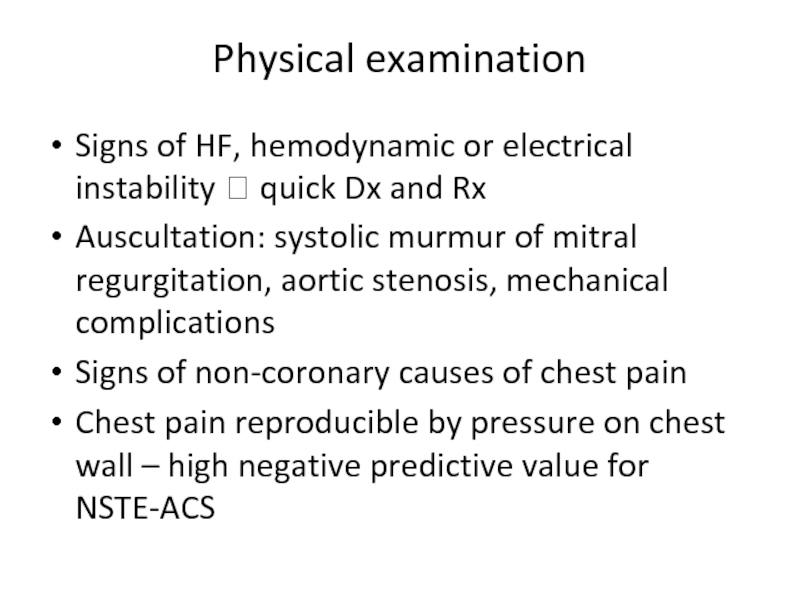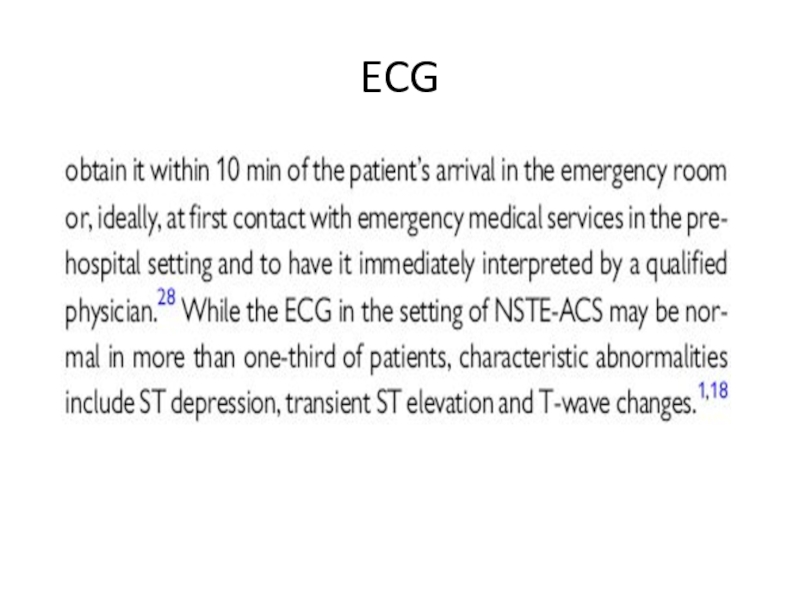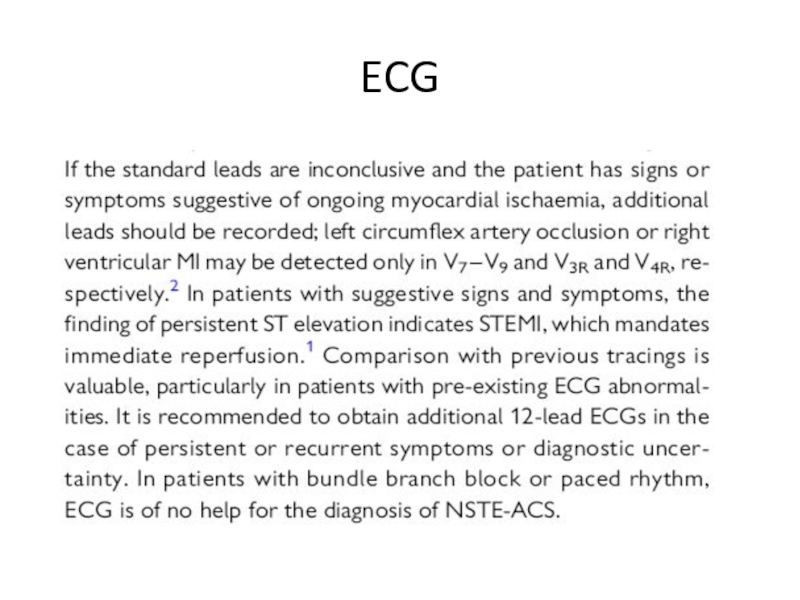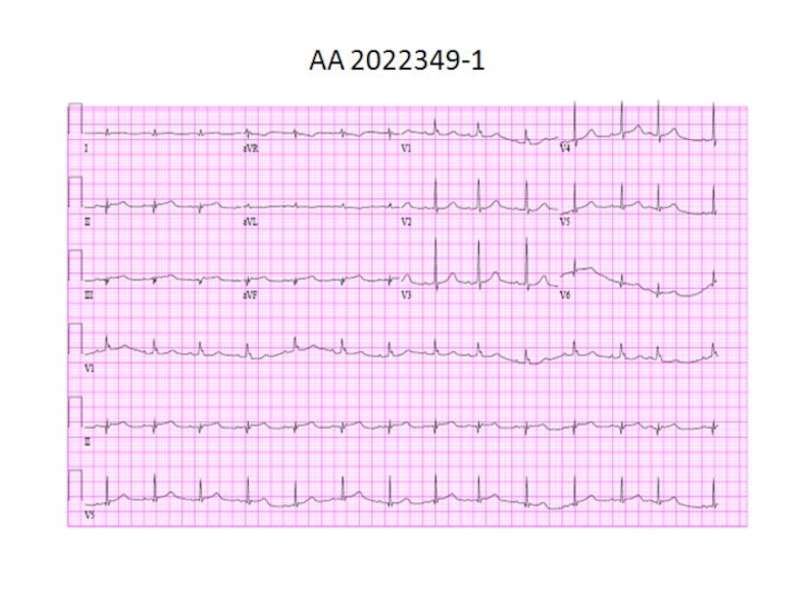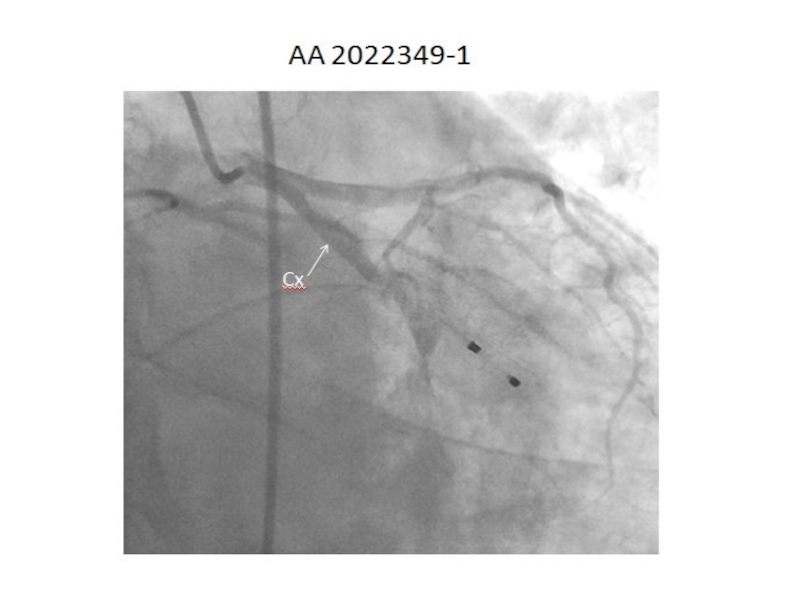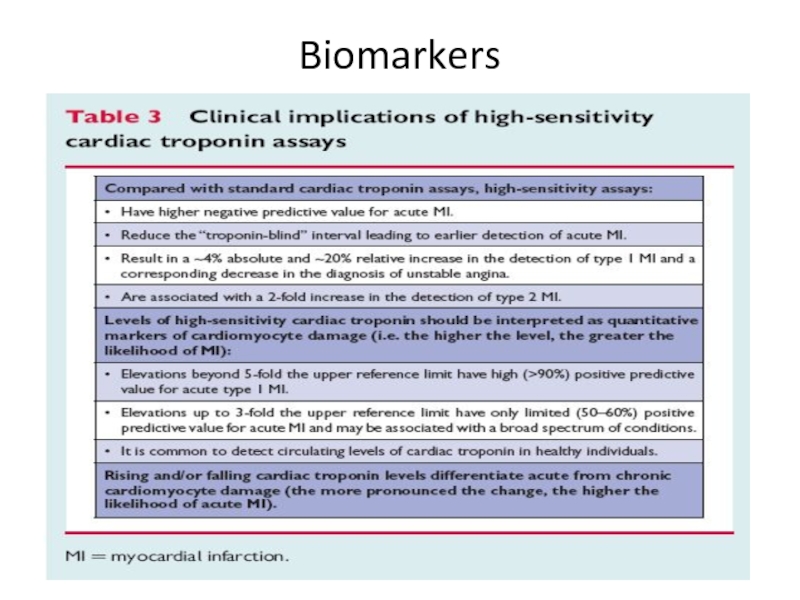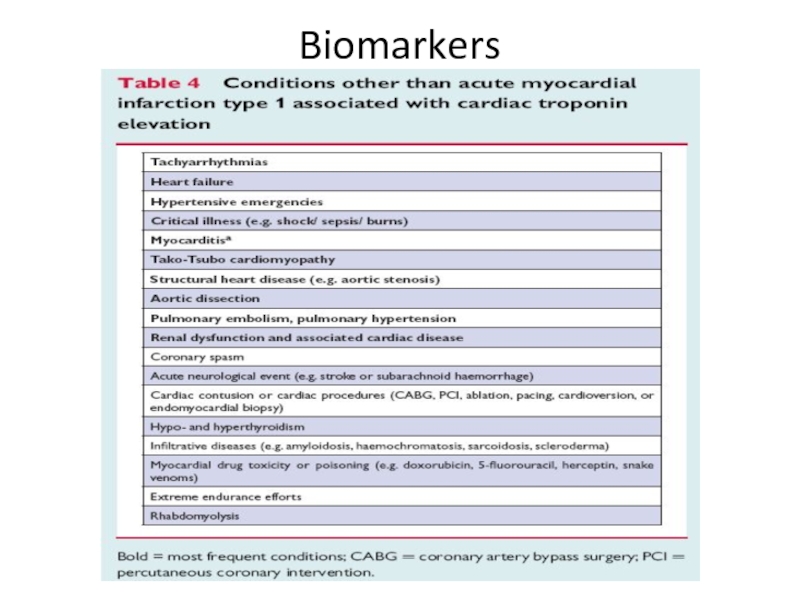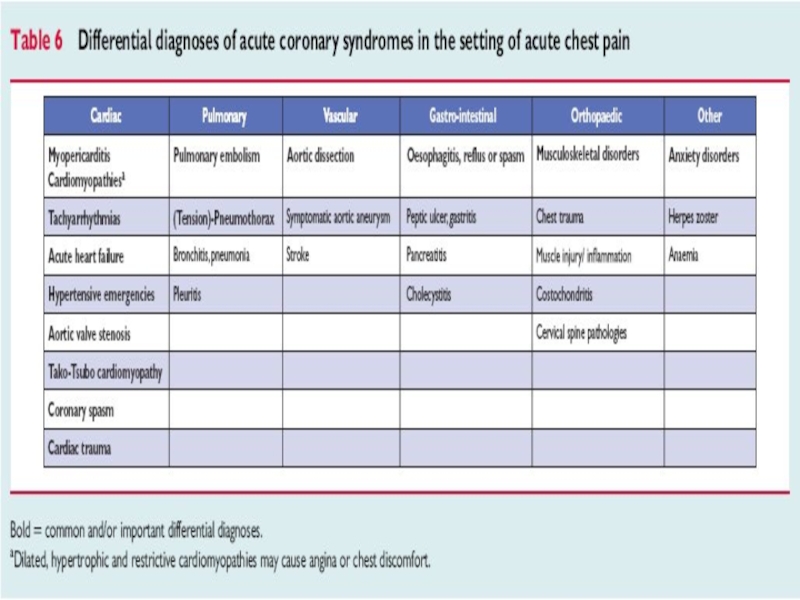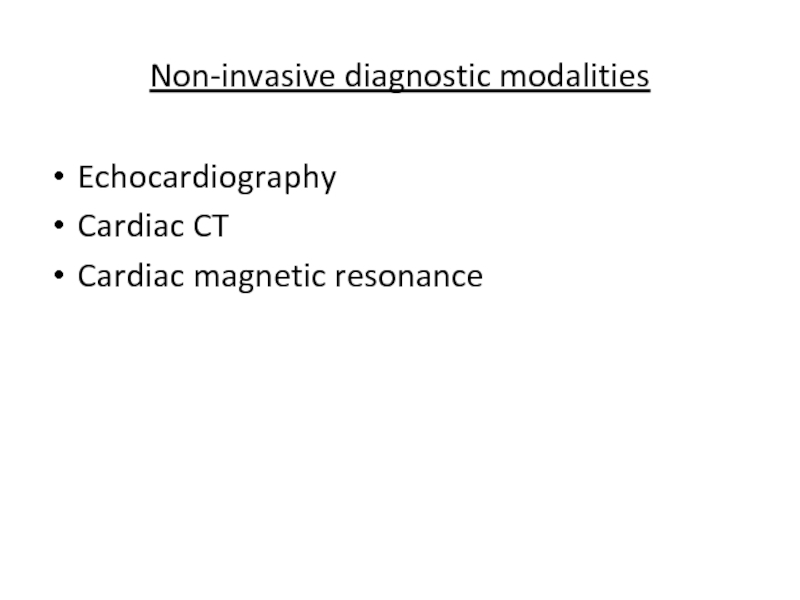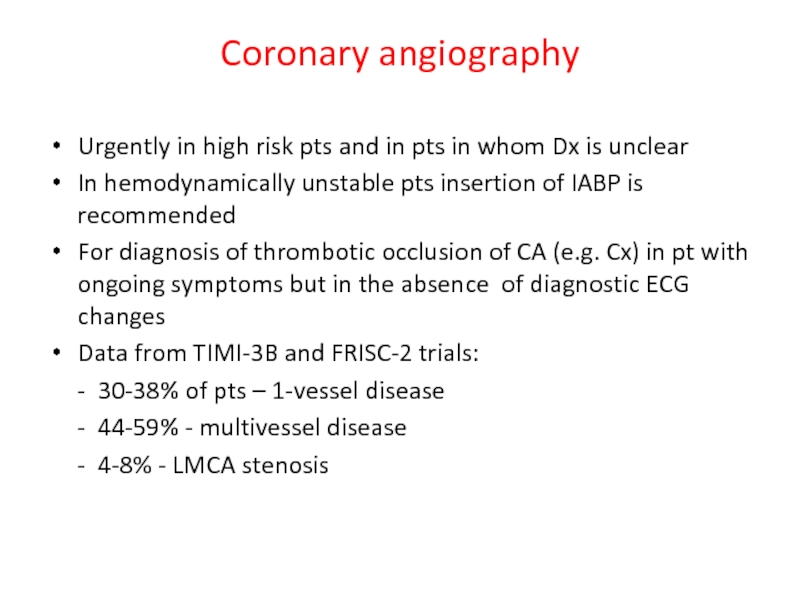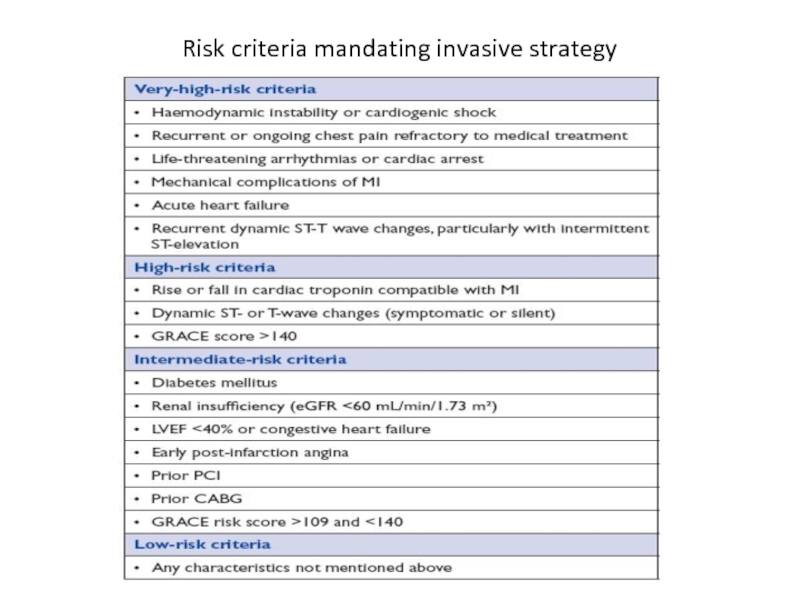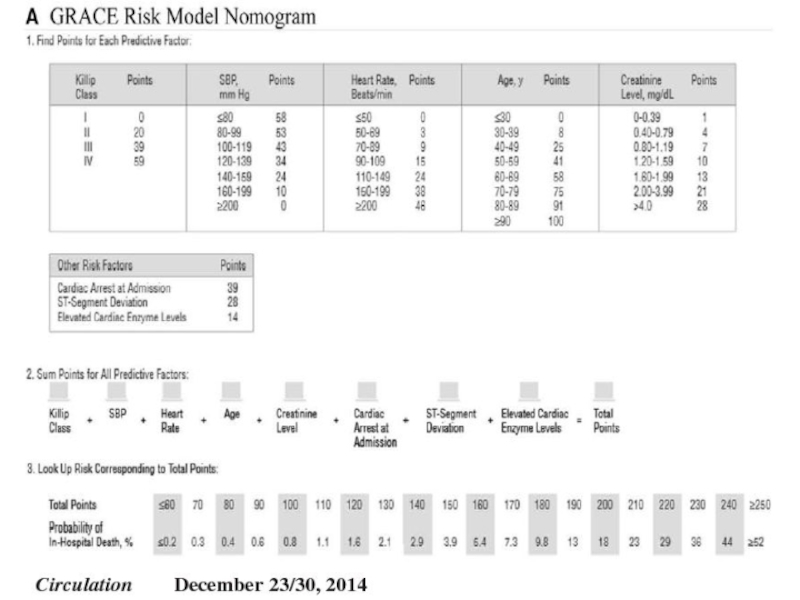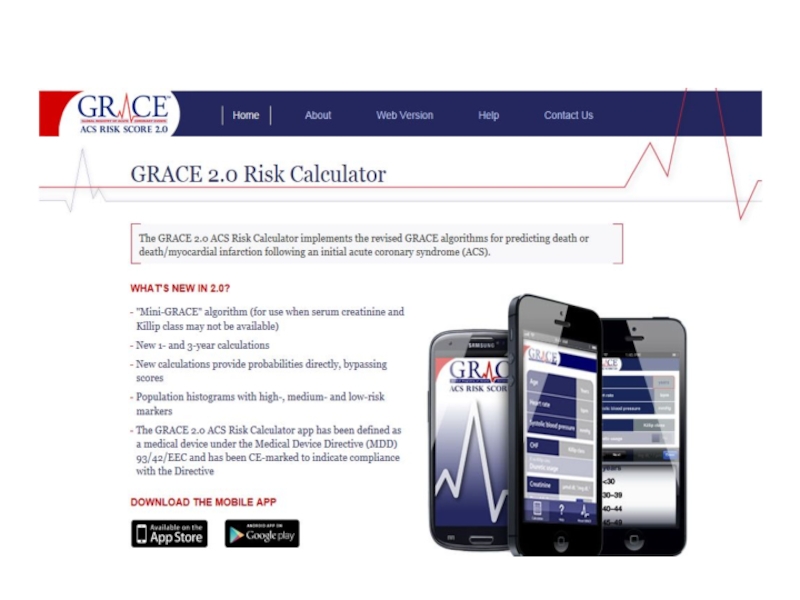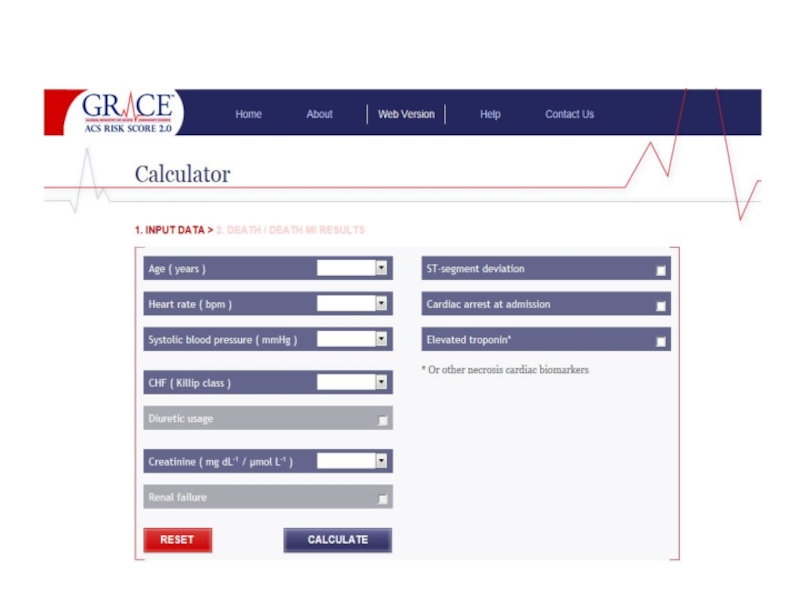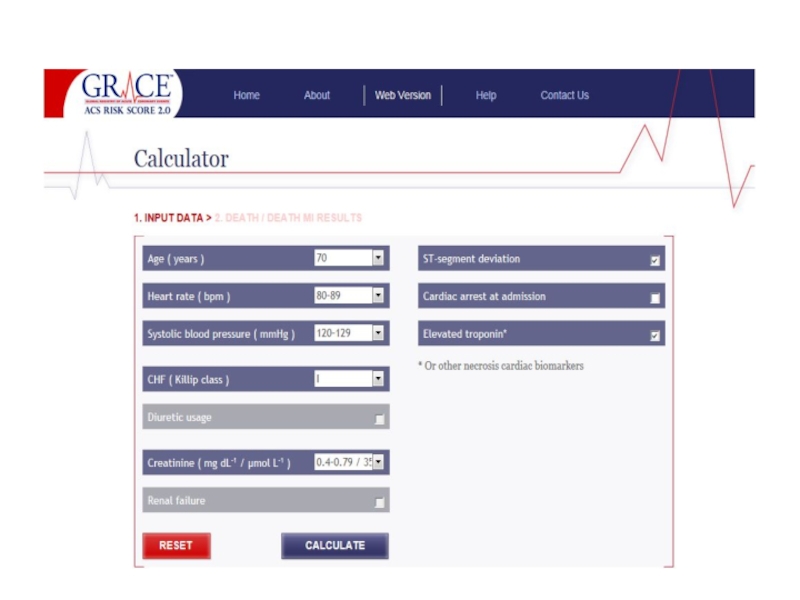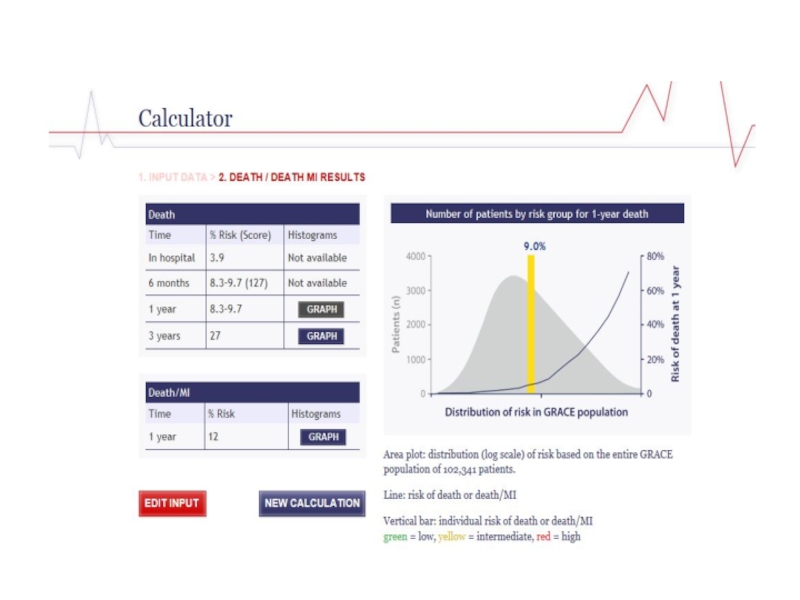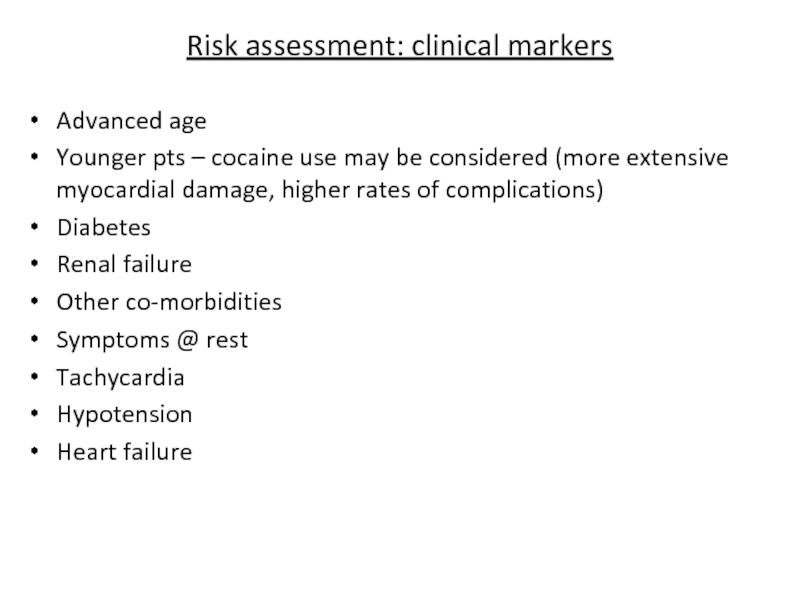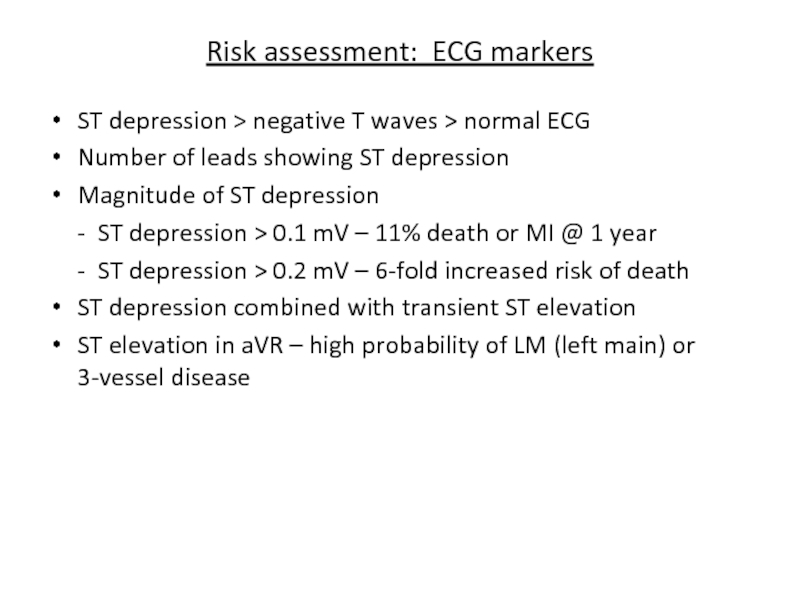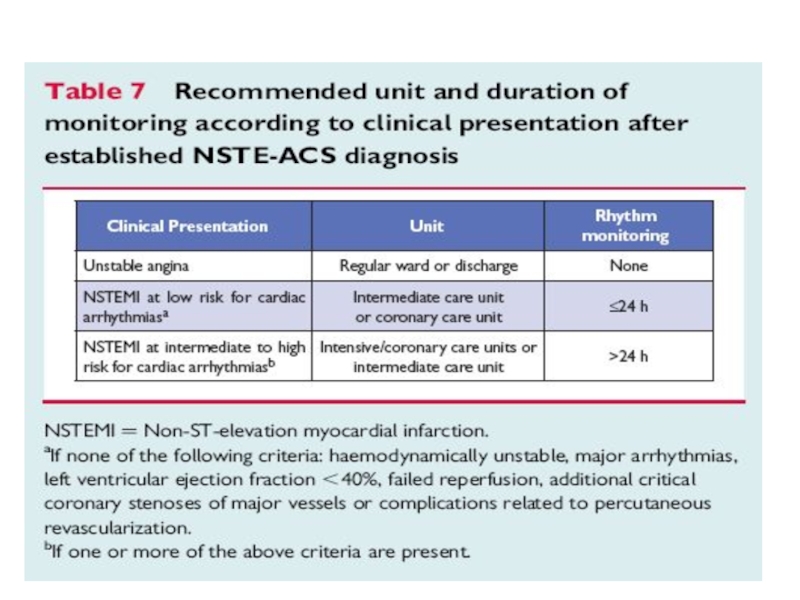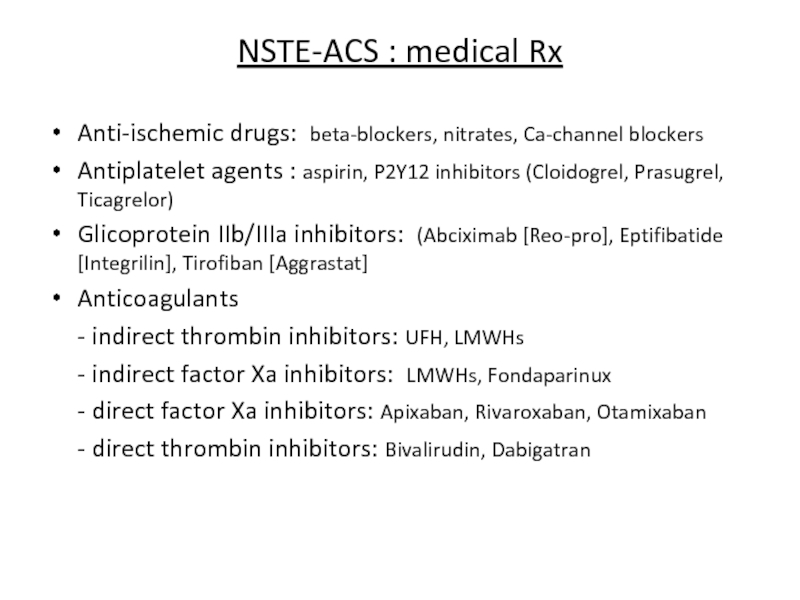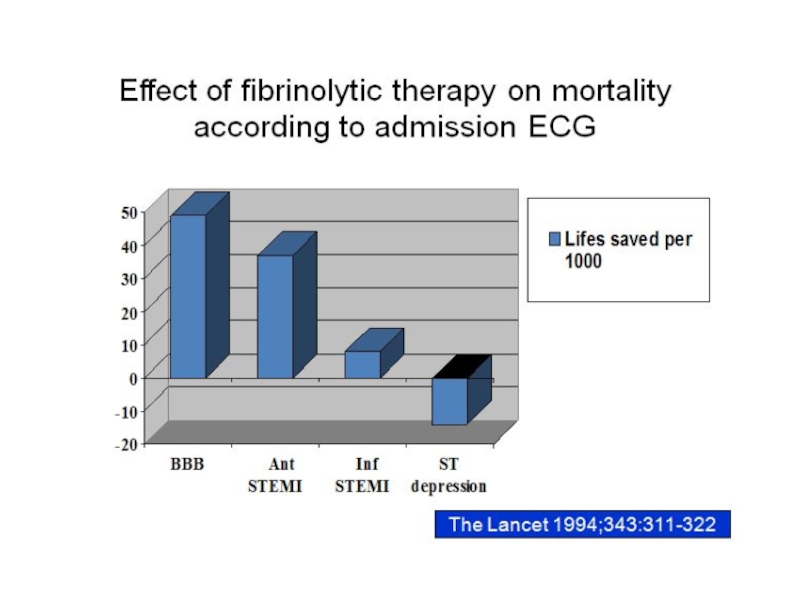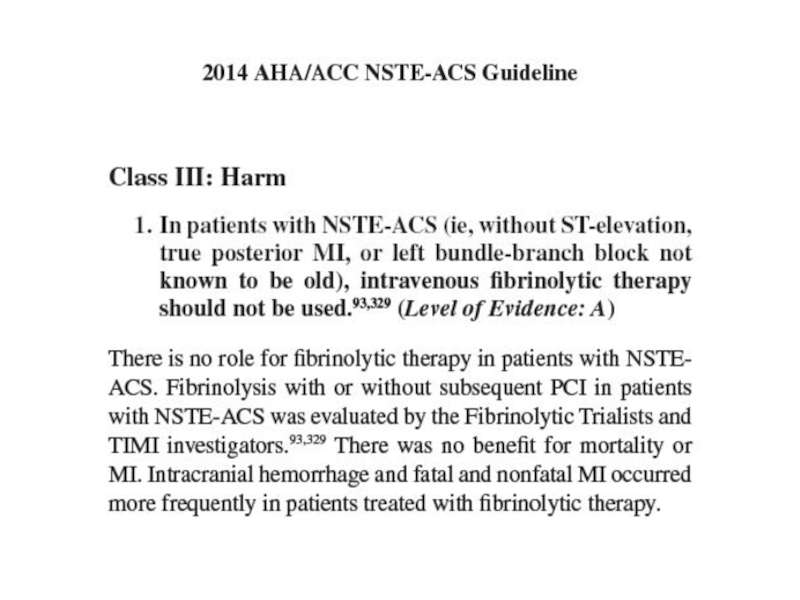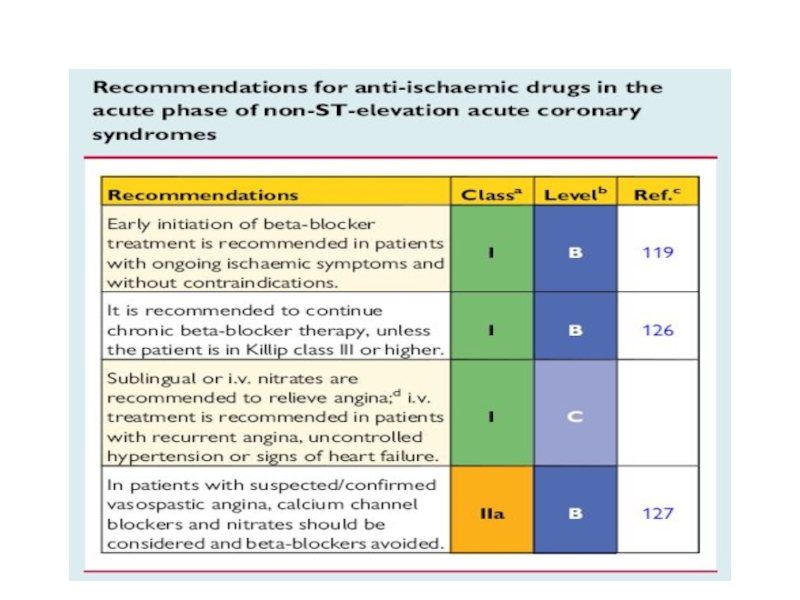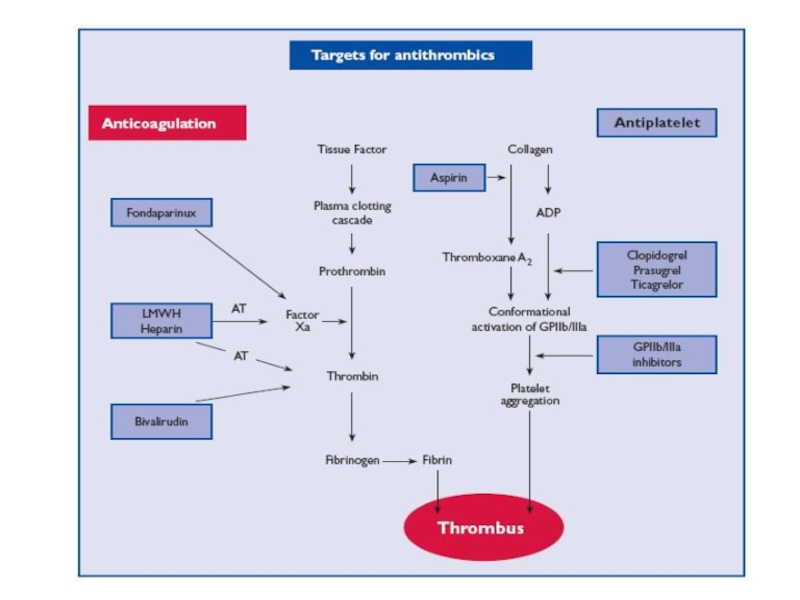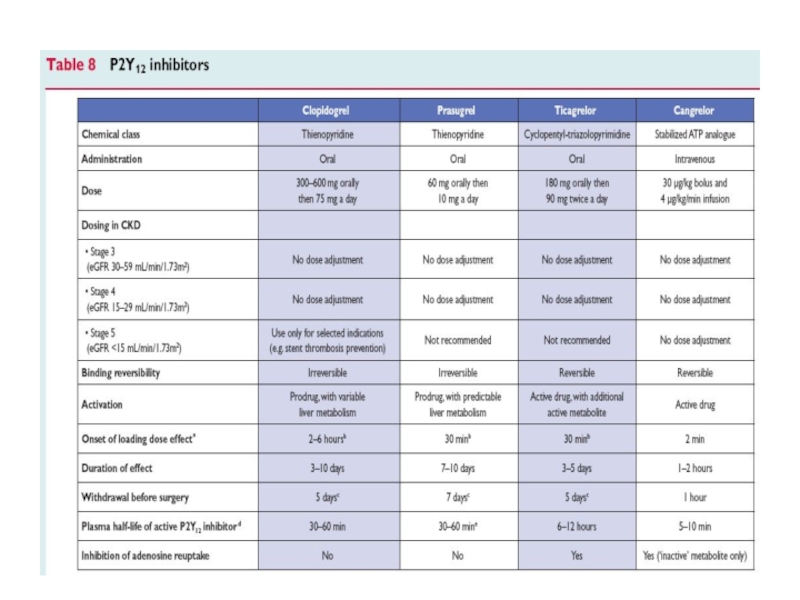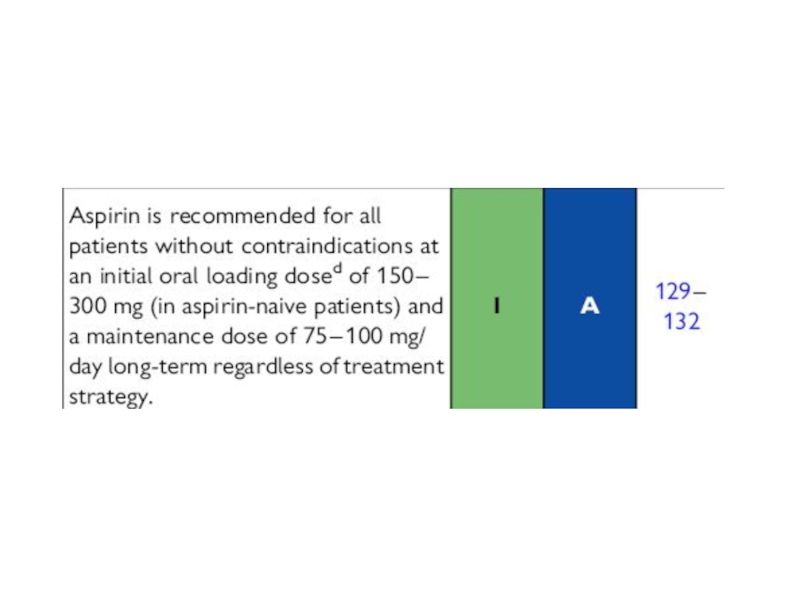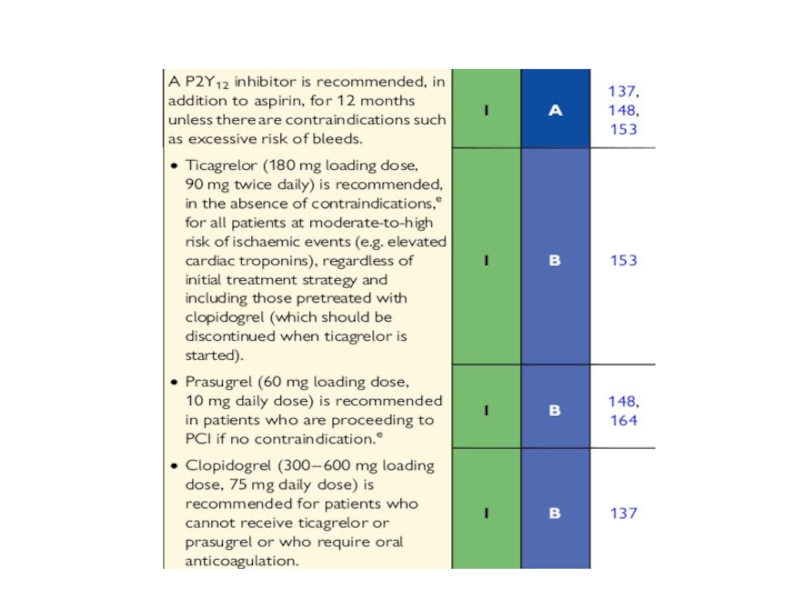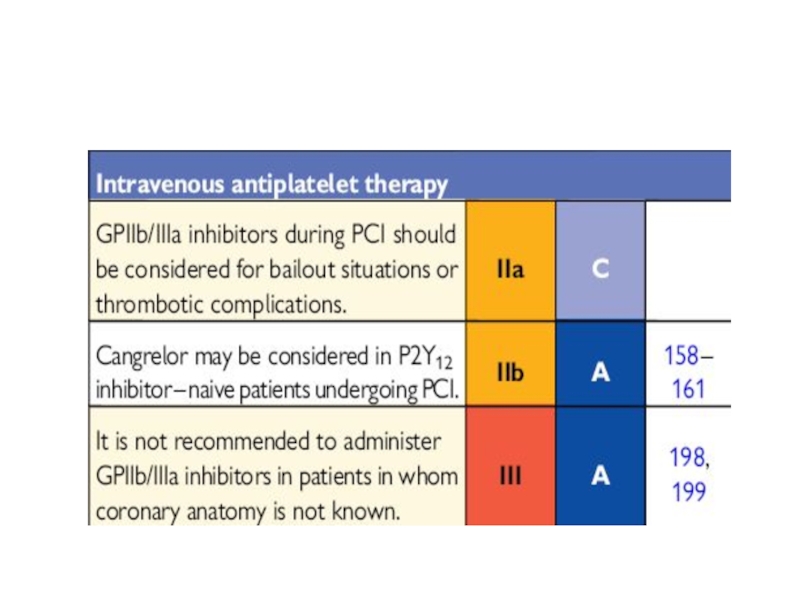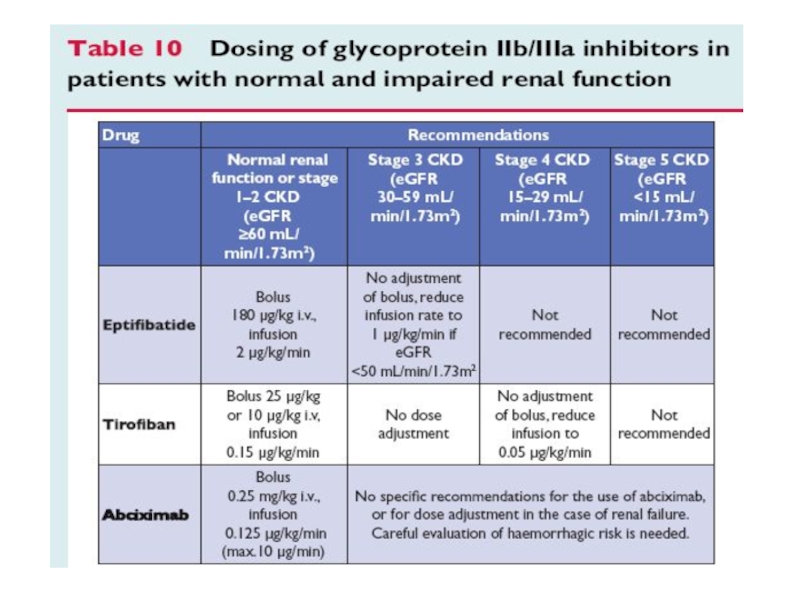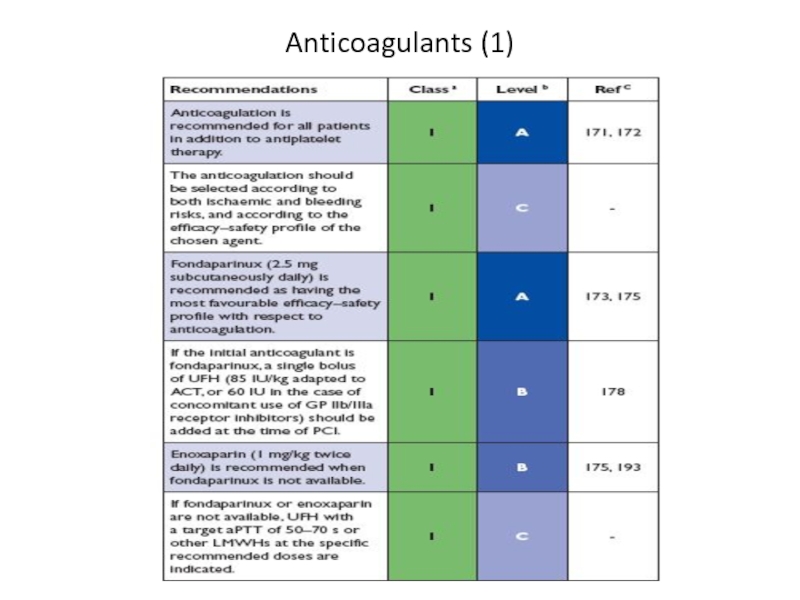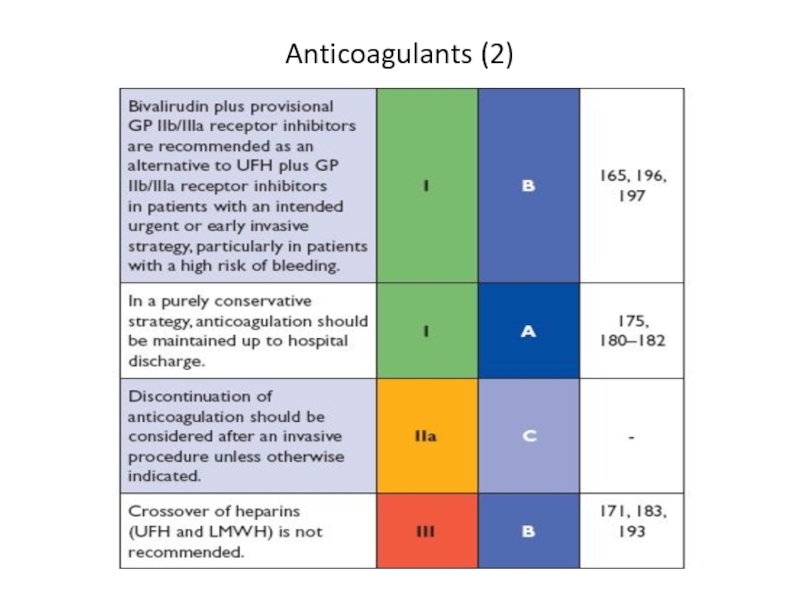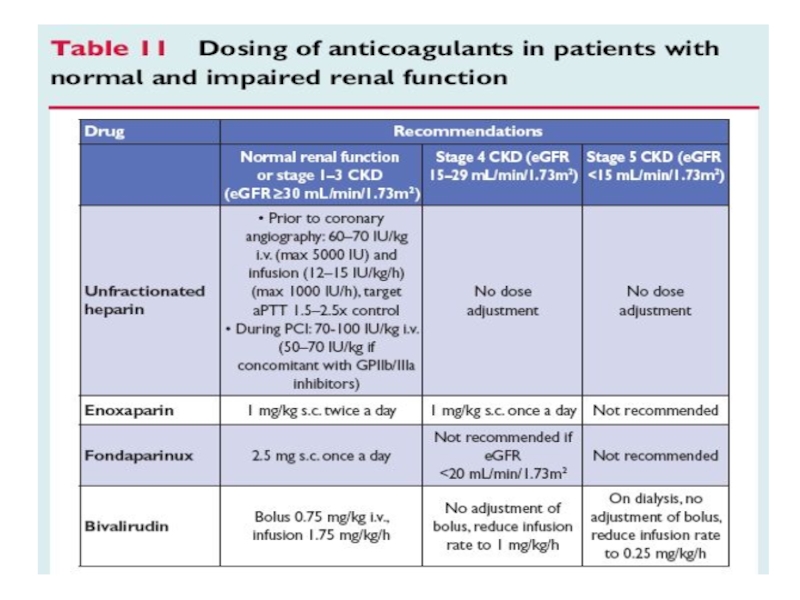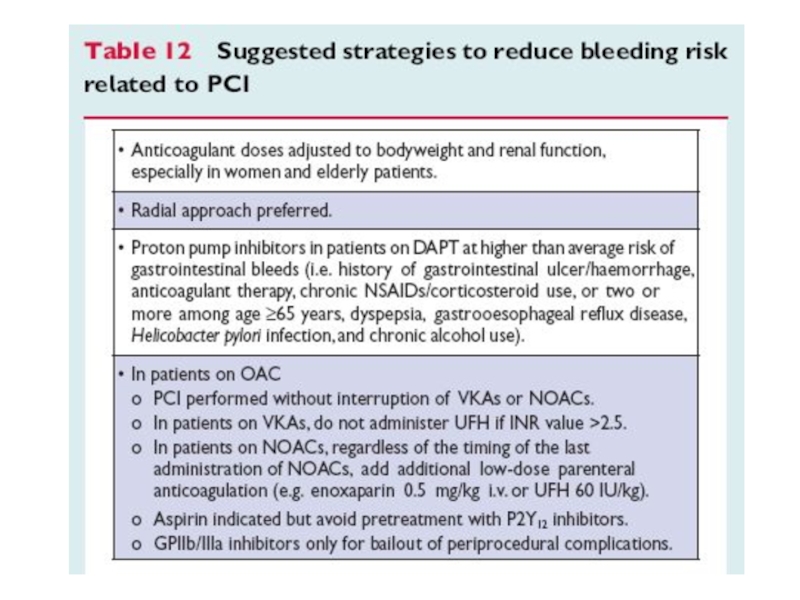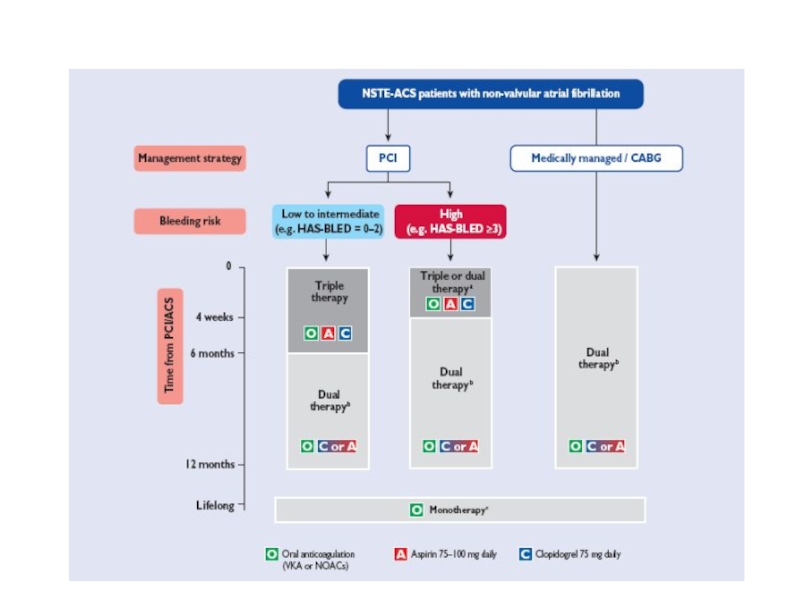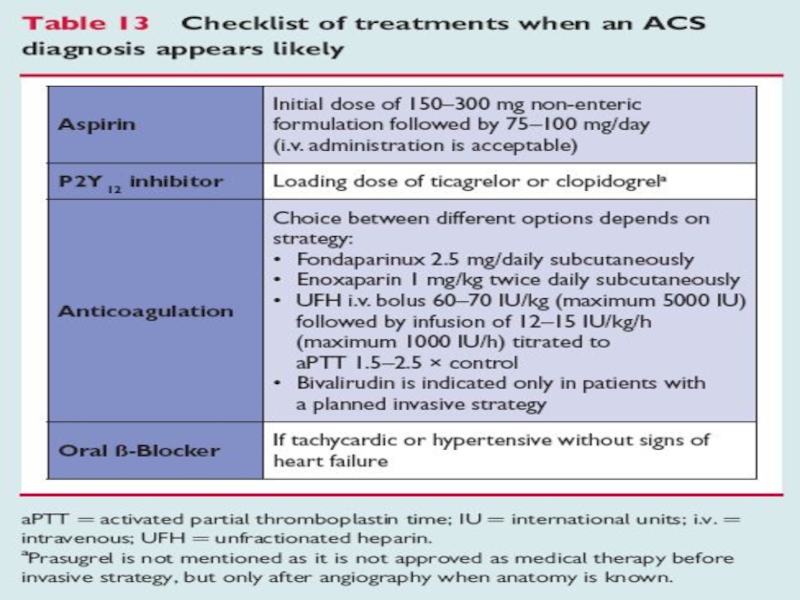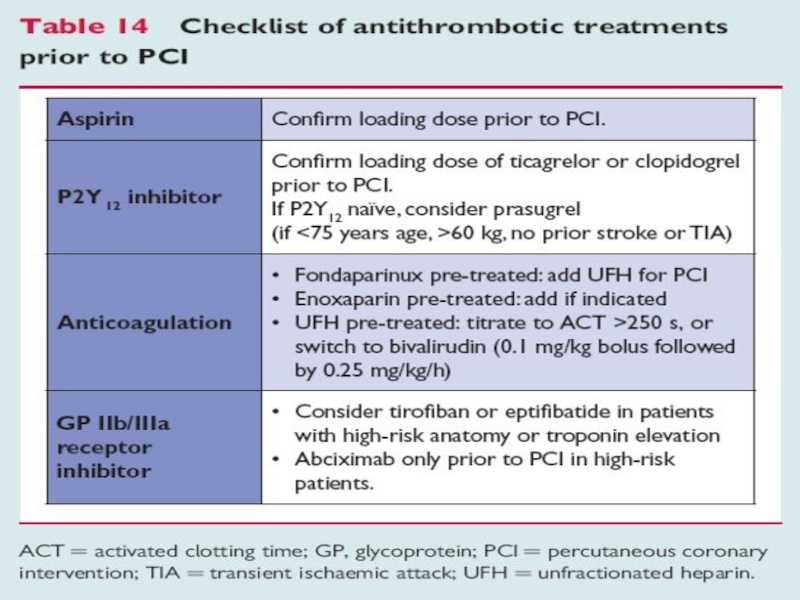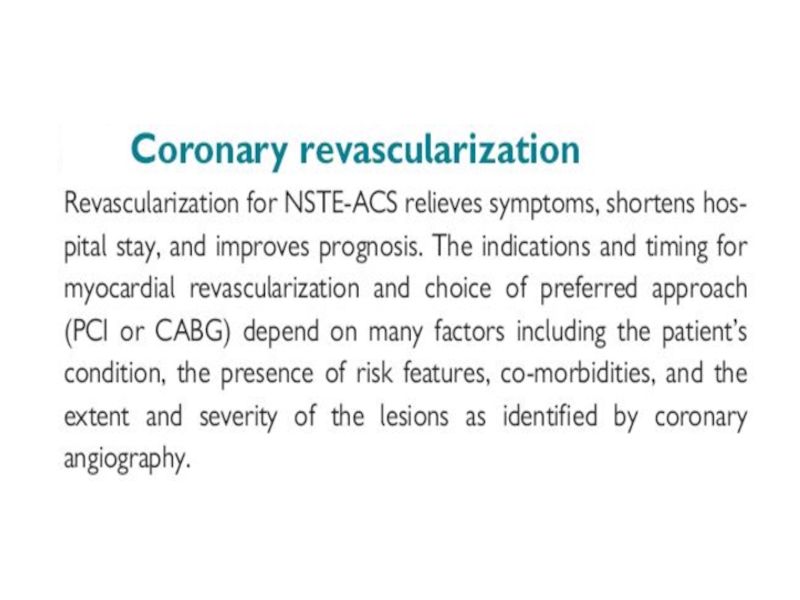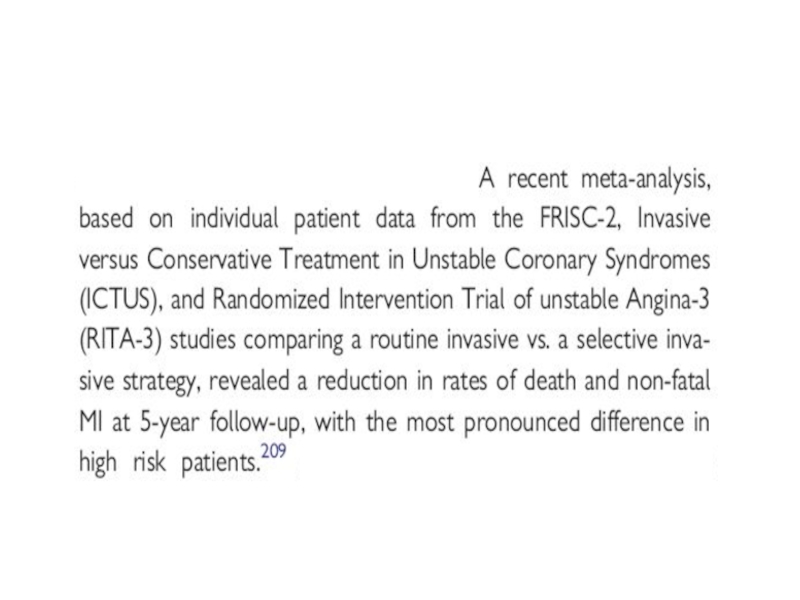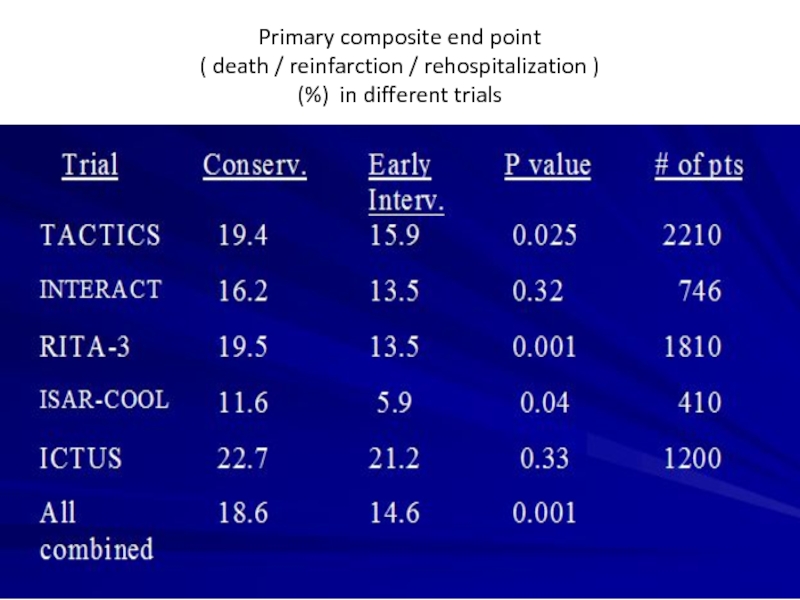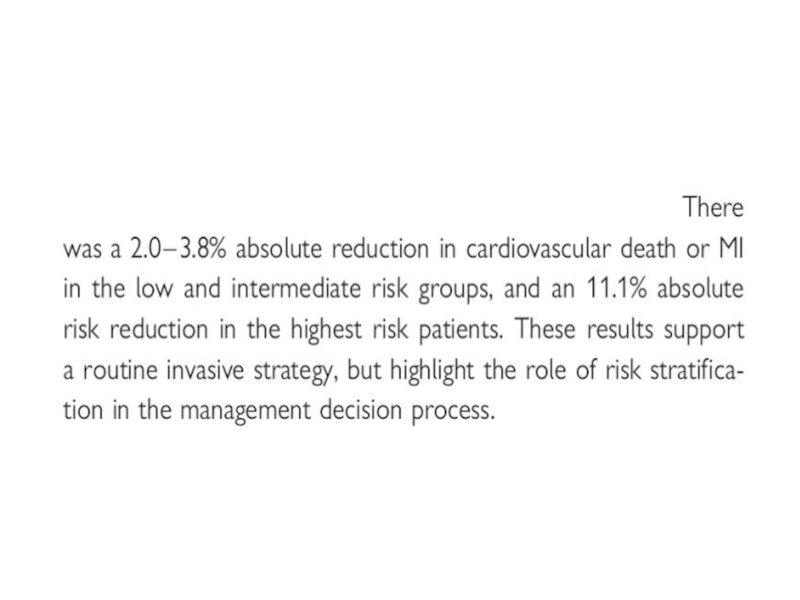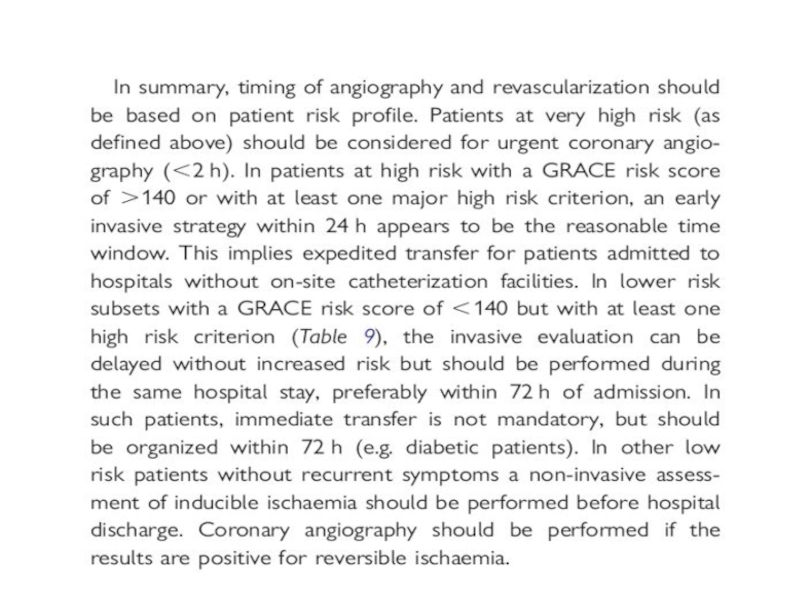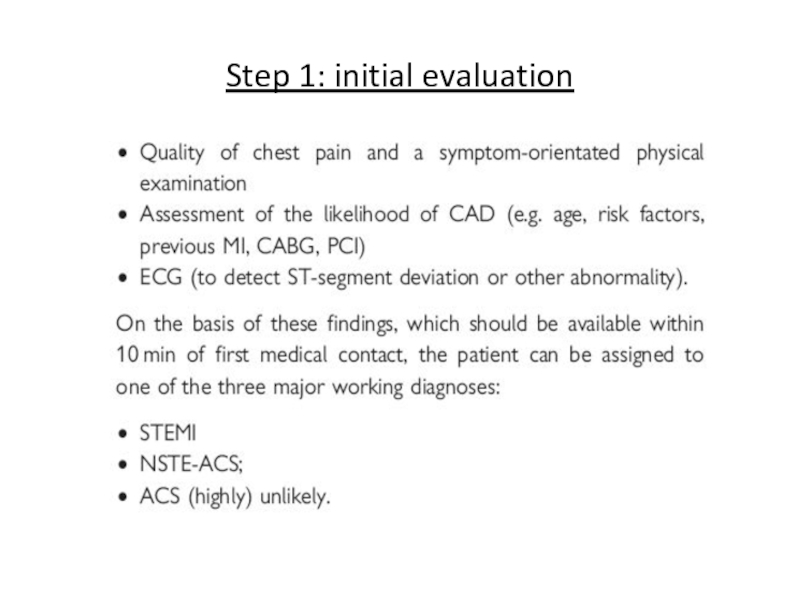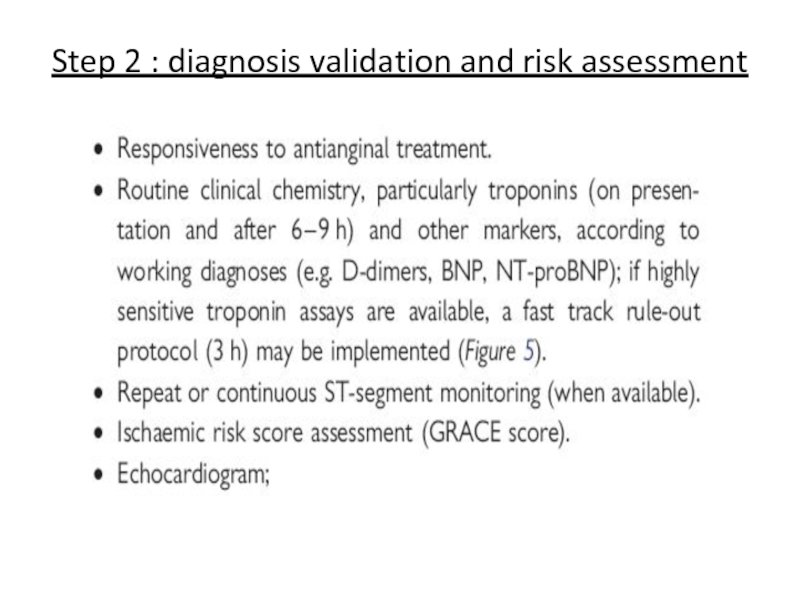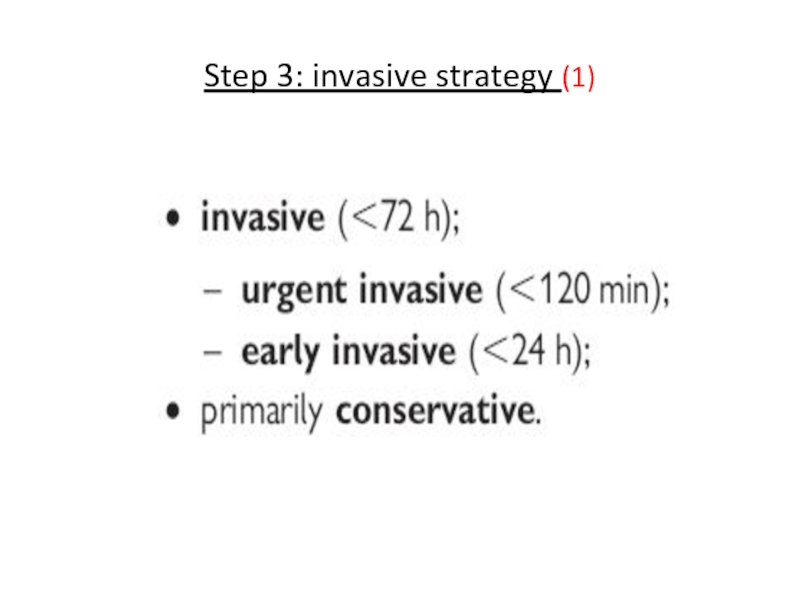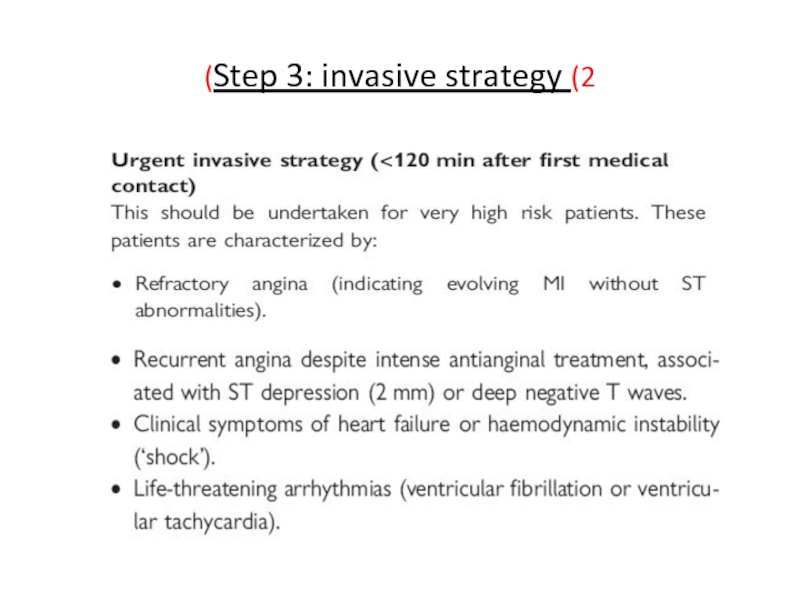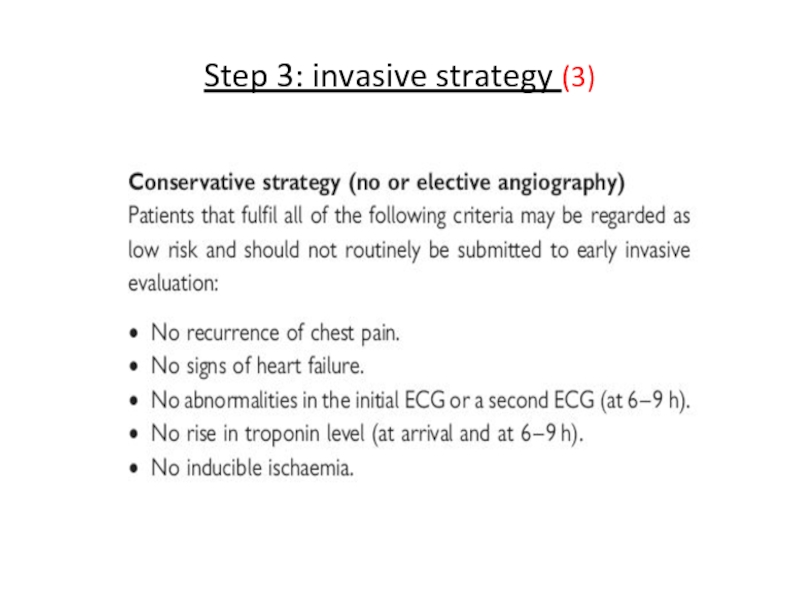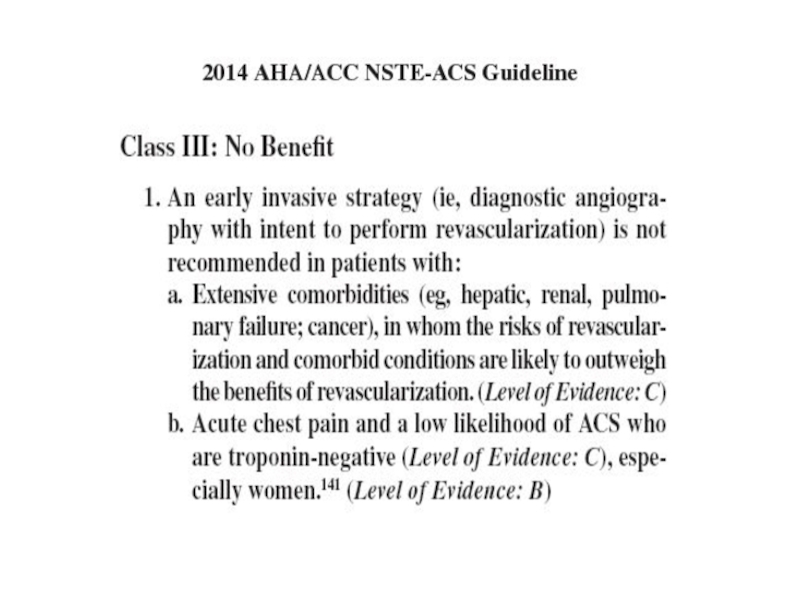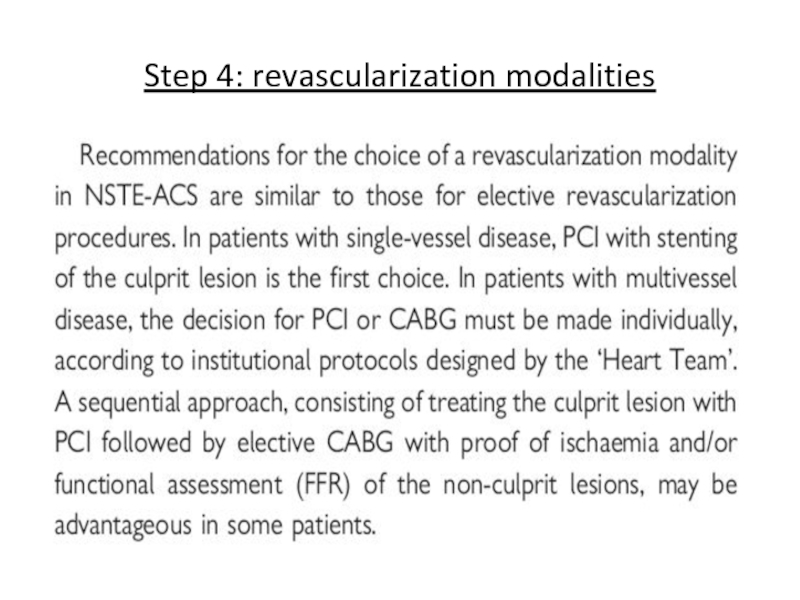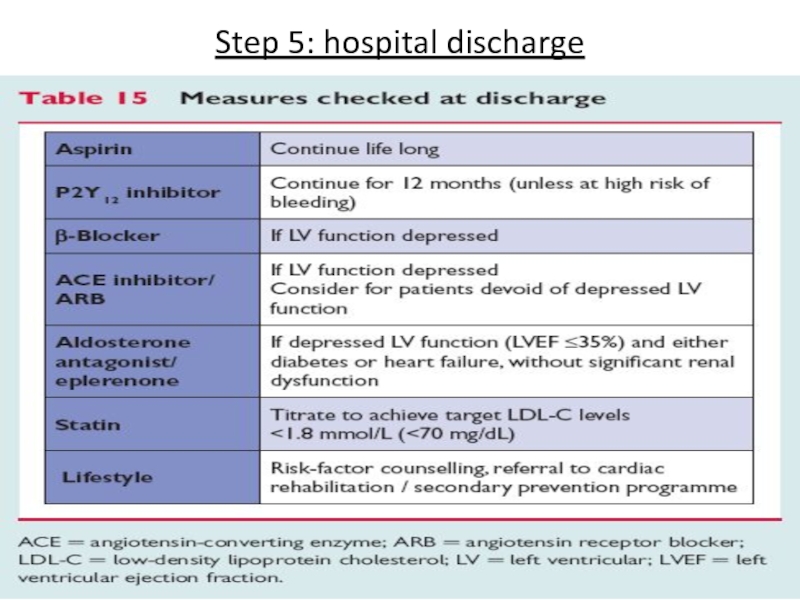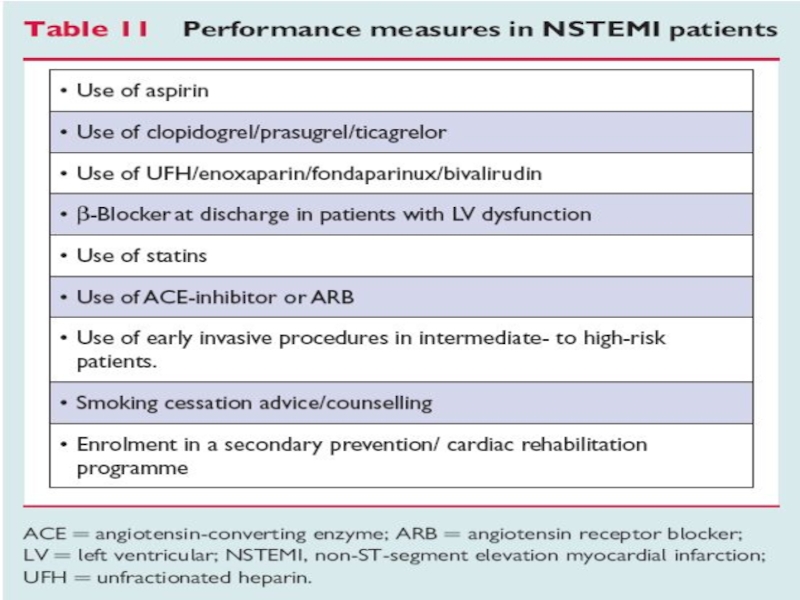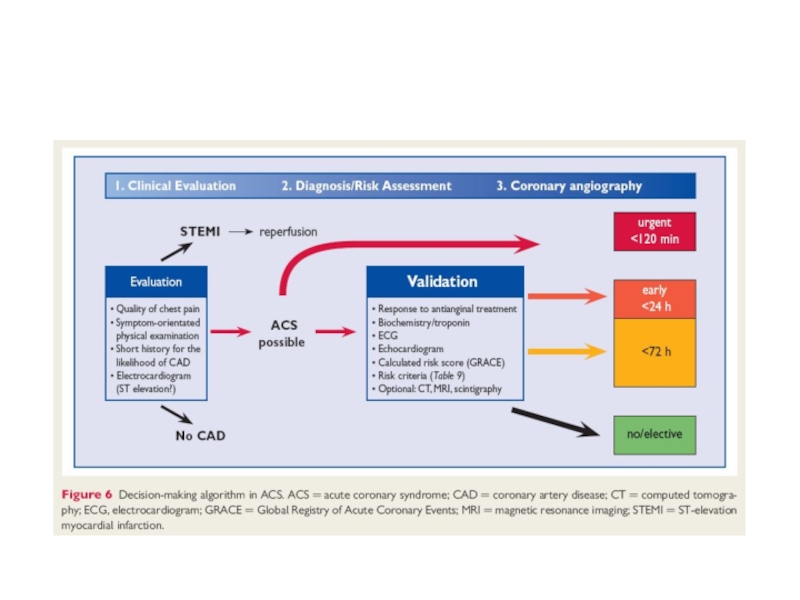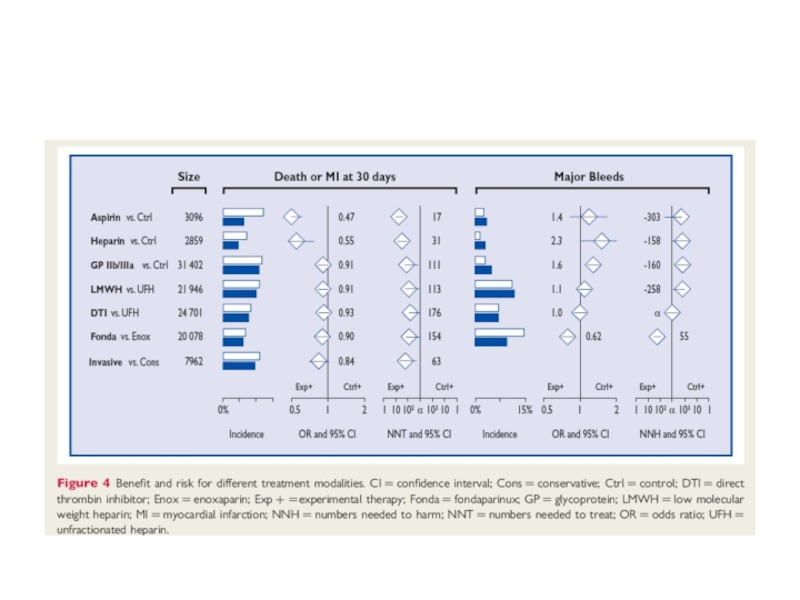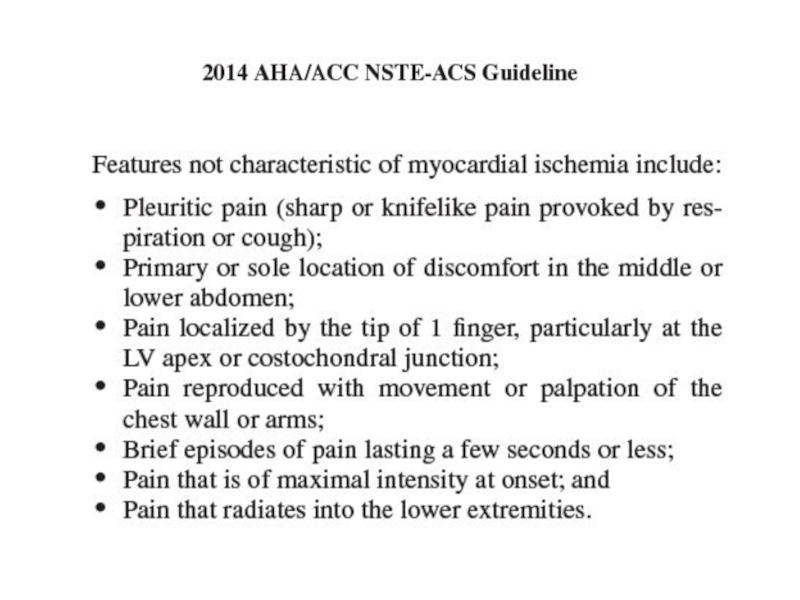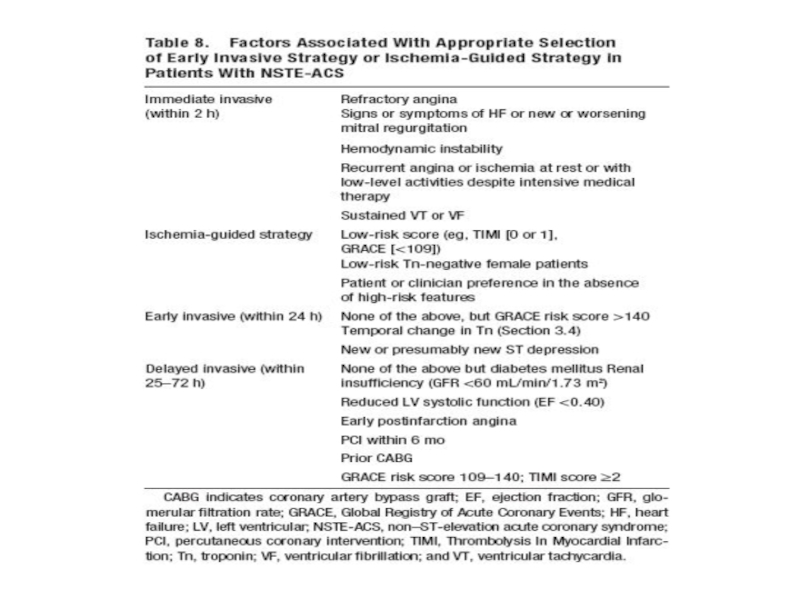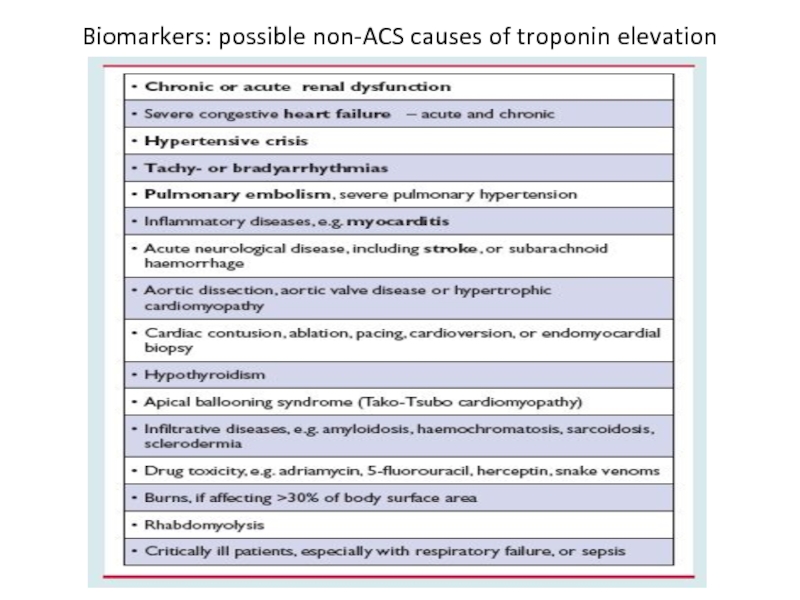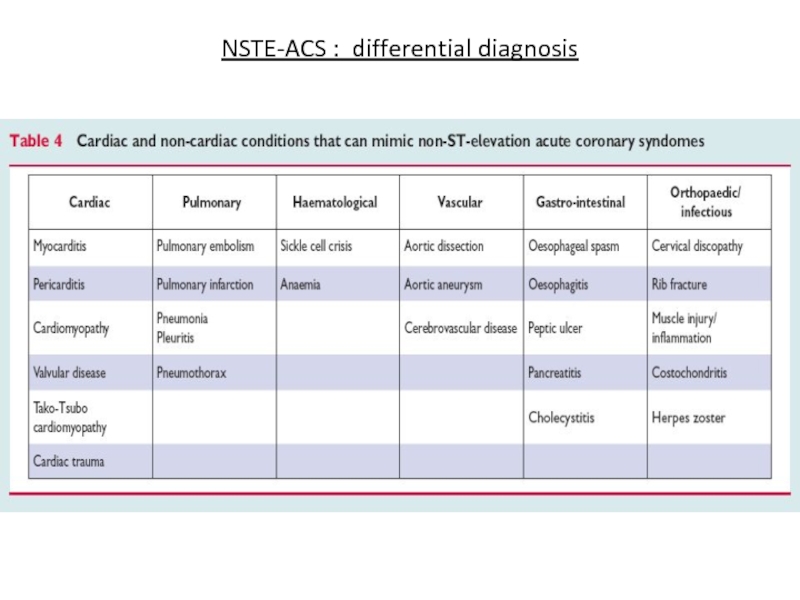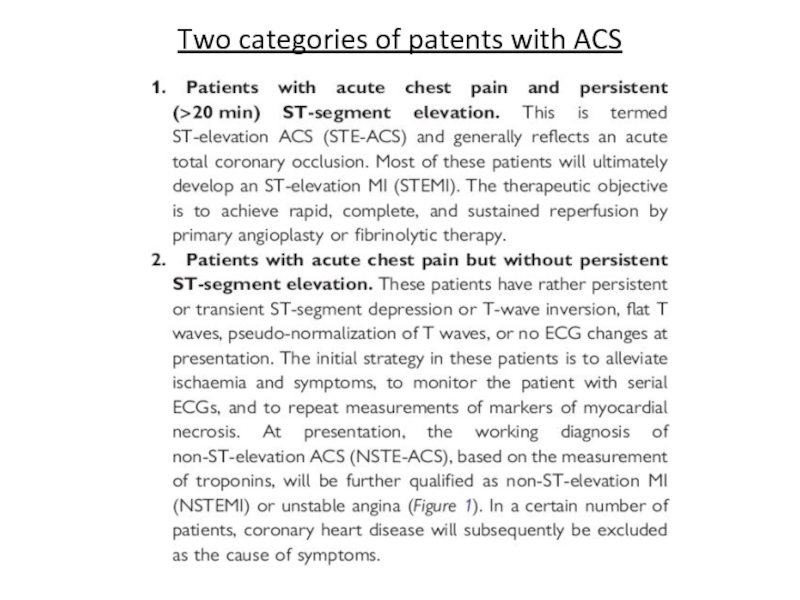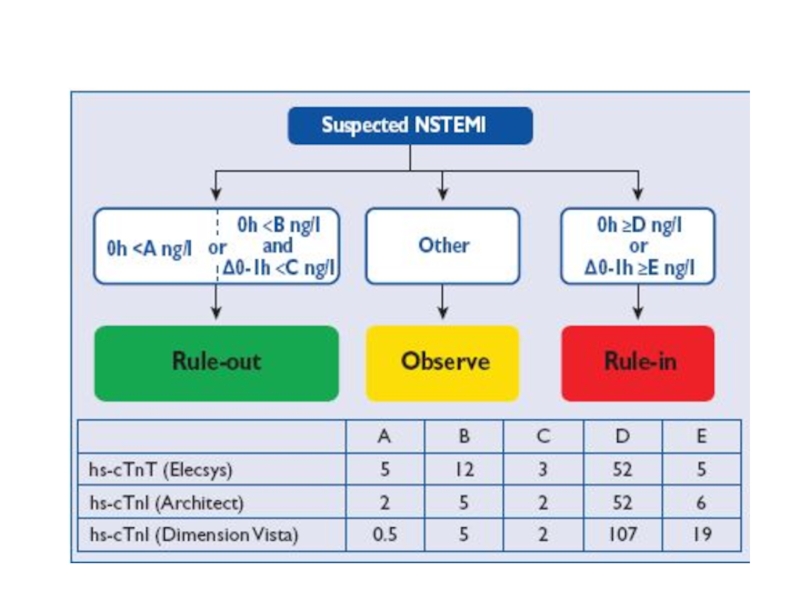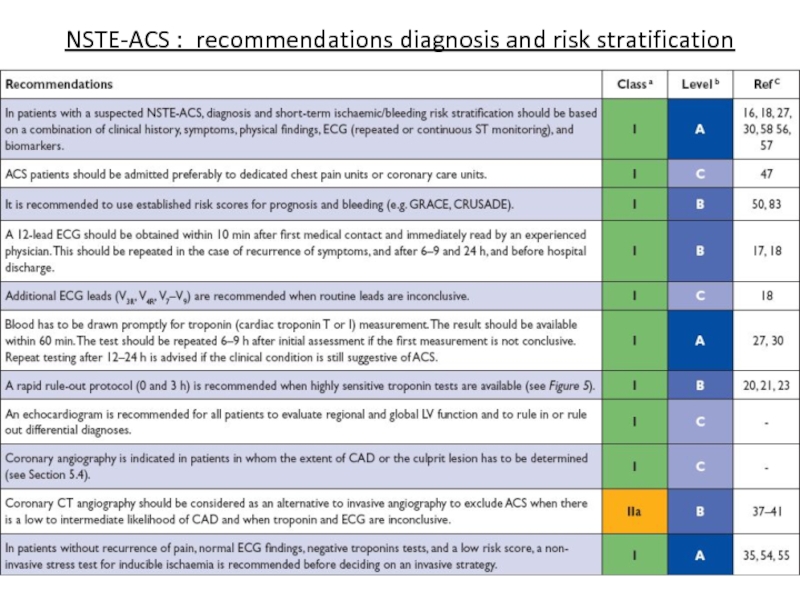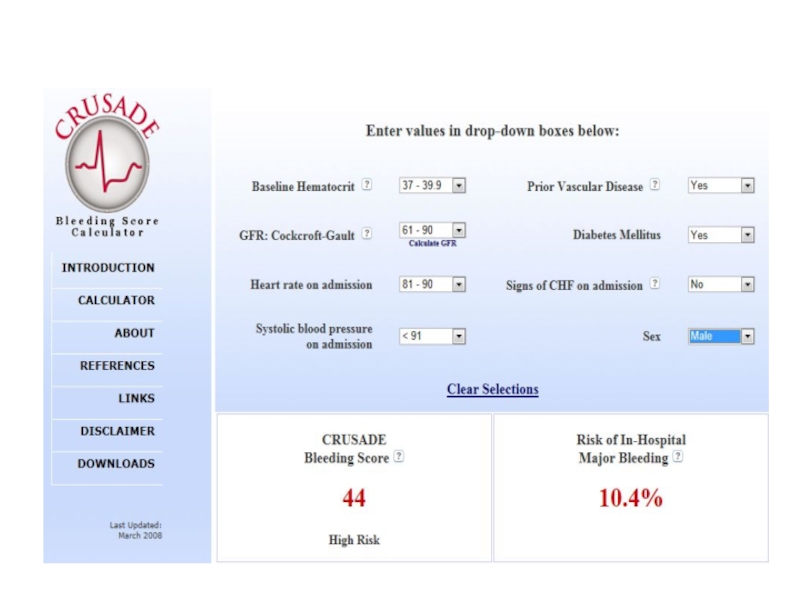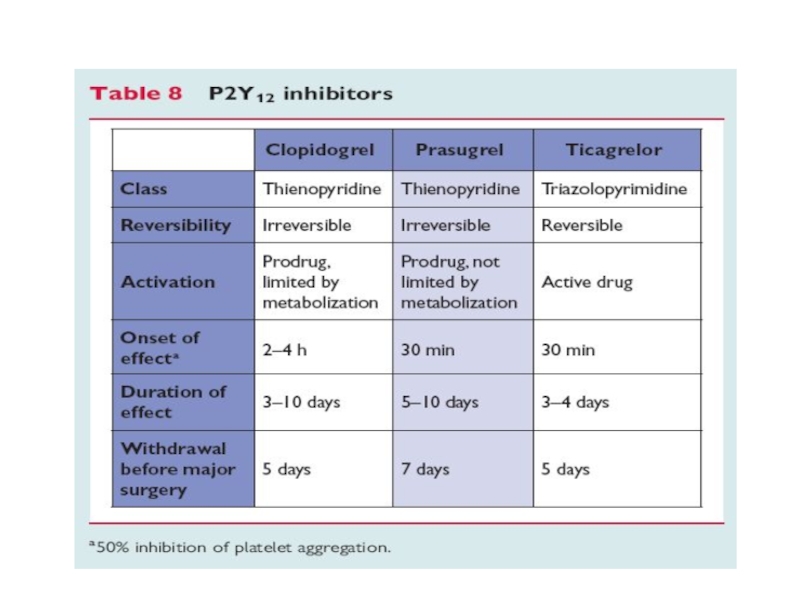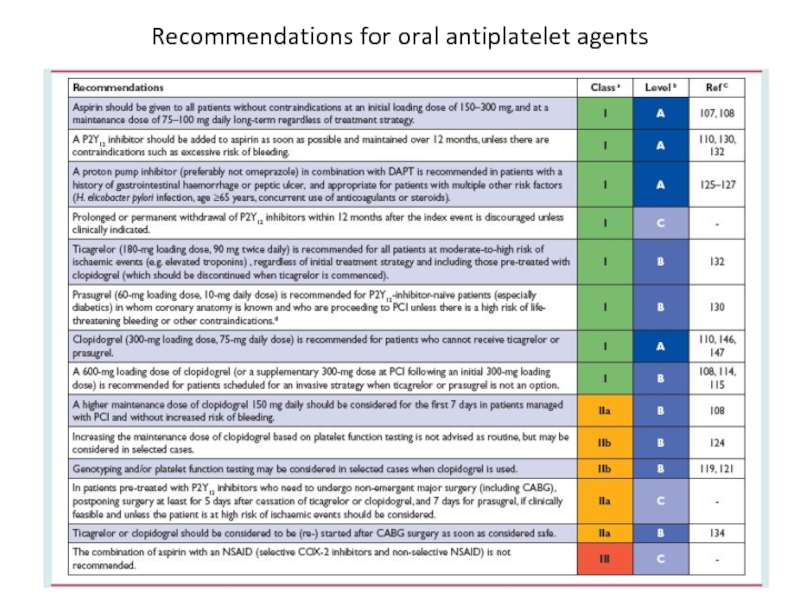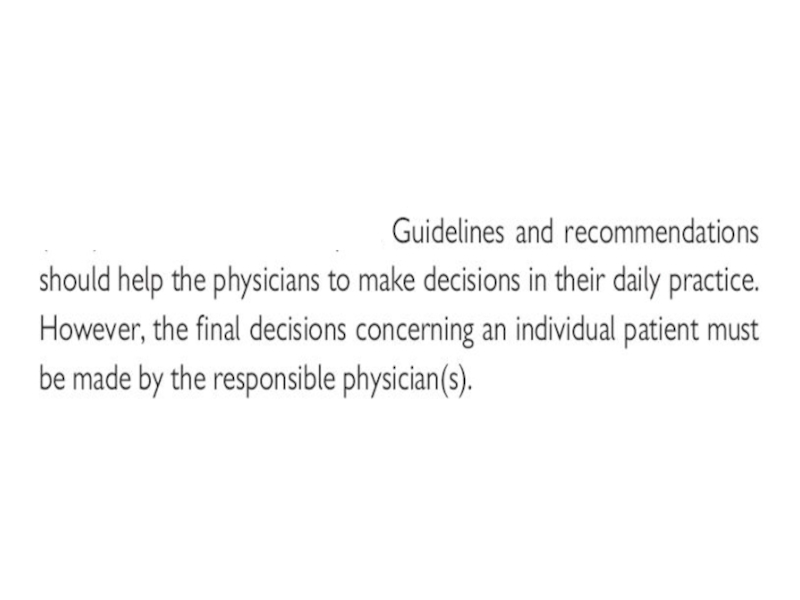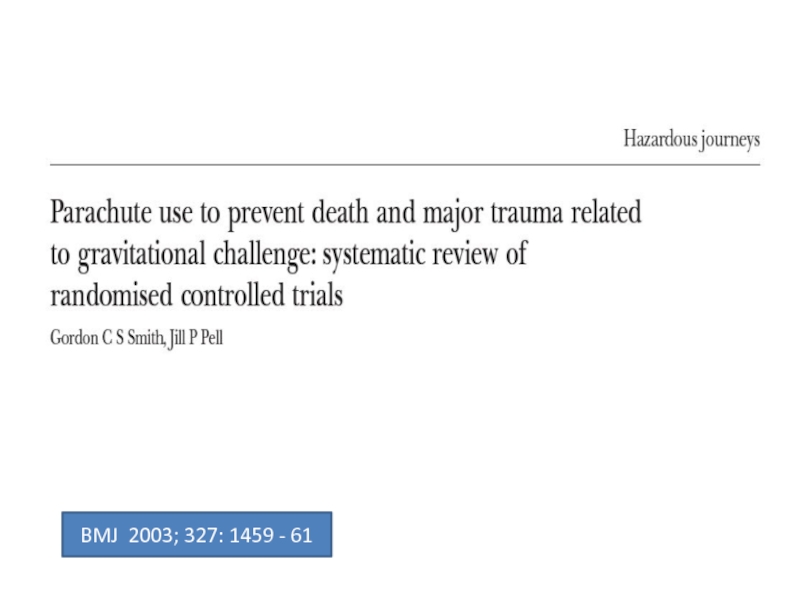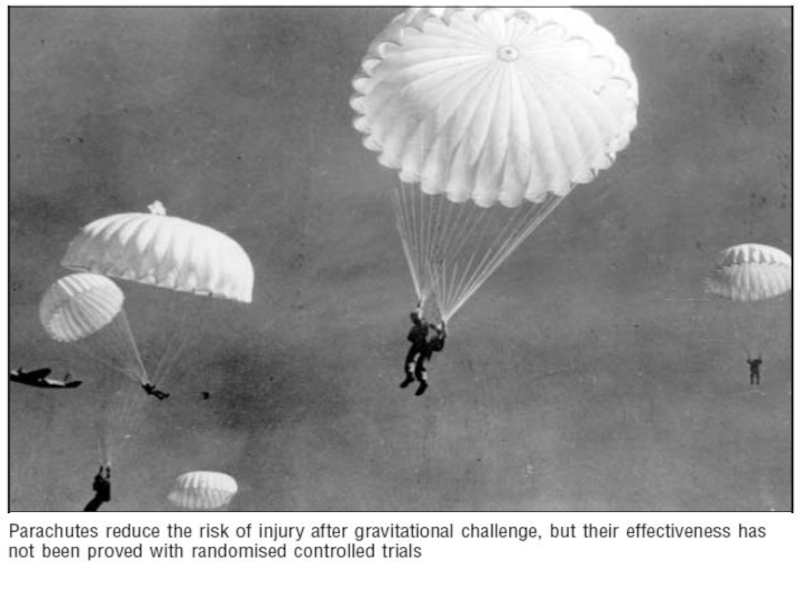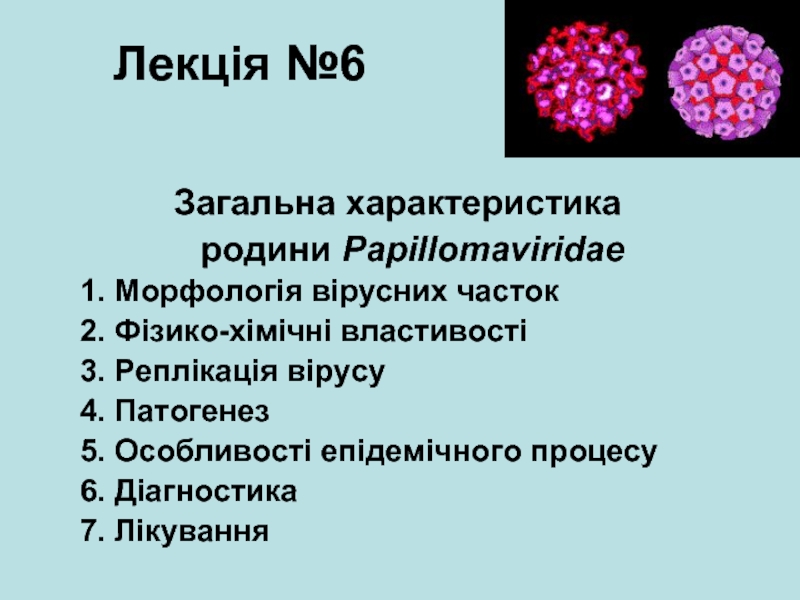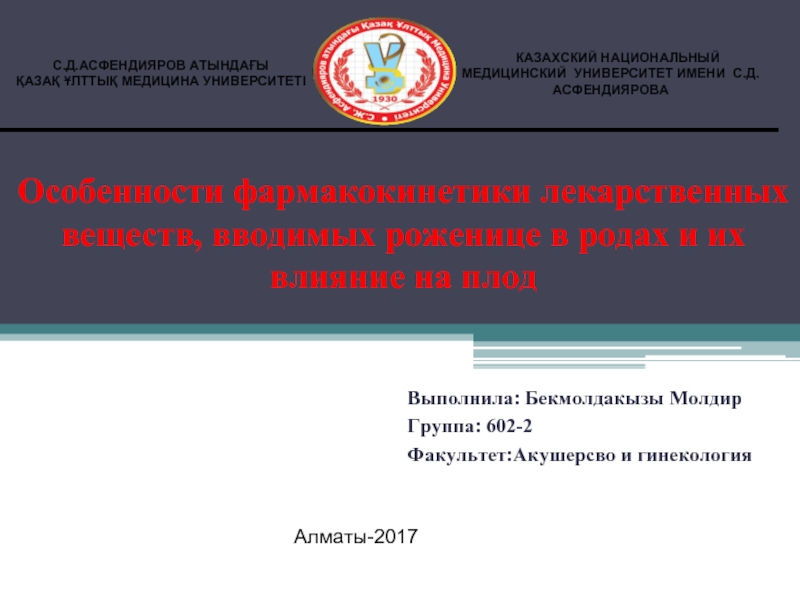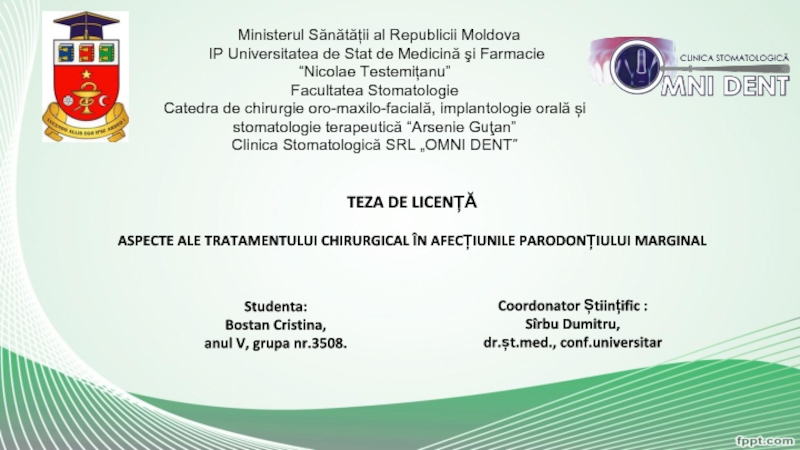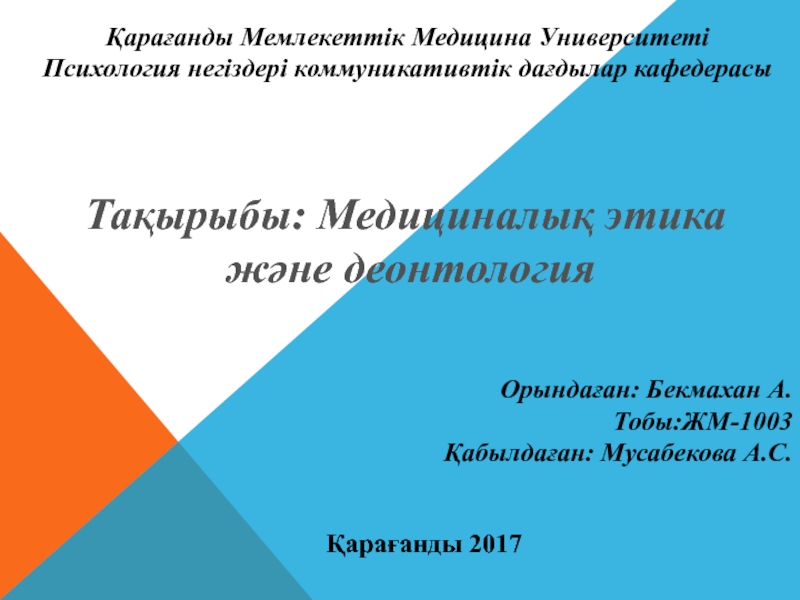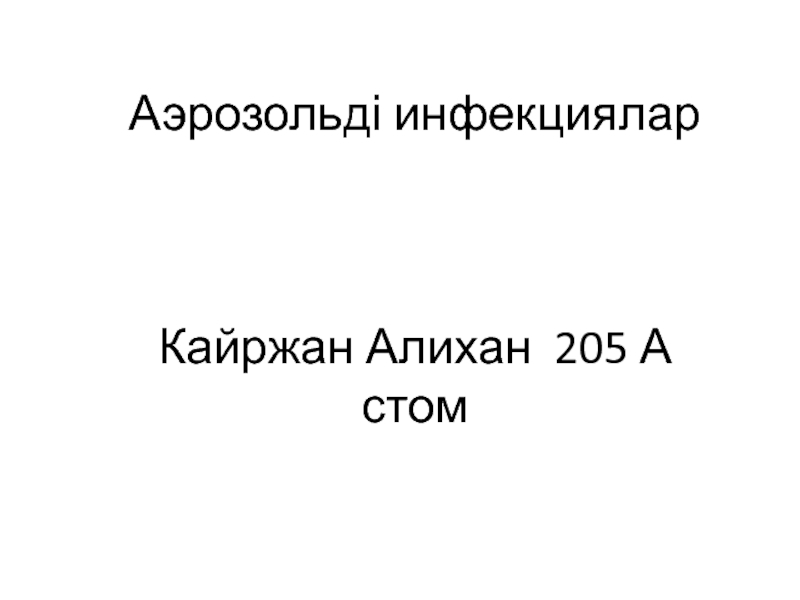- Главная
- Разное
- Дизайн
- Бизнес и предпринимательство
- Аналитика
- Образование
- Развлечения
- Красота и здоровье
- Финансы
- Государство
- Путешествия
- Спорт
- Недвижимость
- Армия
- Графика
- Культурология
- Еда и кулинария
- Лингвистика
- Английский язык
- Астрономия
- Алгебра
- Биология
- География
- Детские презентации
- Информатика
- История
- Литература
- Маркетинг
- Математика
- Медицина
- Менеджмент
- Музыка
- МХК
- Немецкий язык
- ОБЖ
- Обществознание
- Окружающий мир
- Педагогика
- Русский язык
- Технология
- Физика
- Философия
- Химия
- Шаблоны, картинки для презентаций
- Экология
- Экономика
- Юриспруденция
Clinical presentations of CAD презентация
Содержание
- 1. Clinical presentations of CAD
- 6. The spectrum of ACS
- 7. Clinical presentations of CAD Silent ischemia Stable
- 8. ACS in their different
- 10. NSTE-ACS : diagnosis Medical Hx (timing and
- 12. Chest pain
- 13. Atypical complaints Epigastral pain Indigestion-like syndrome Isolated
- 14. Physical examination Signs of HF, hemodynamic or
- 15. ECG
- 16. ECG
- 19. Biomarkers
- 20. Biomarkers
- 22. Non-invasive diagnostic modalities Echocardiography Cardiac CT Cardiac magnetic resonance
- 23. Coronary angiography Urgently in high risk
- 24. Risk criteria mandating invasive strategy
- 30. Risk assessment: clinical markers Advanced age Younger
- 31. Risk assessment: ECG markers ST depression >
- 33. NSTE-ACS : medical Rx Anti-ischemic drugs: beta-blockers,
- 43. Anticoagulants (1)
- 44. Anticoagulants (2)
- 52. Primary composite end point ( death
- 55. Step 1: initial evaluation
- 56. Step 2 : diagnosis validation and risk assessment
- 57. Step 3: invasive strategy (1)
- 58. Step 3: invasive strategy (2)
- 59. Step 3: invasive strategy (3)
- 61. Step 4: revascularization modalities
- 62. Step 5: hospital discharge
- 64. Thank you 4 attention
- 65. Backup slides
- 70. Biomarkers: possible non-ACS causes of troponin elevation
- 71. NSTE-ACS : differential diagnosis
- 72. Two categories of patents with ACS
- 74. NSTE-ACS : recommendations diagnosis and risk stratification
- 77. Recommendations for oral antiplatelet agents
- 78. NSTE-ACS: IIb/IIIa inhibitors
- 80. BMJ 2003; 327: 1459 - 61
Слайд 1NSTE-ACS
Dr. Michael Kapeliovich, MD, PhD
Director Emergency Cardiology Service
Deputy Director ICCU
11.2016
Слайд 7Clinical presentations of CAD
Silent ischemia
Stable angina
Unstable angina
Myocardial infarction
Heart failure
Sudden cardiac death
Слайд 8
ACS in their different clinical presentations share a widely
common pathophysiological substrate:
atherosclerotic plaque rupture or erosion, with different degrees of superimposed thrombus and distal embolization, resulting in myocardial underperfusion
atherosclerotic plaque rupture or erosion, with different degrees of superimposed thrombus and distal embolization, resulting in myocardial underperfusion
Слайд 10NSTE-ACS : diagnosis
Medical Hx (timing and characteristics of CP)
Physical examination (hypotension,
heart failure signs)
ECG
Echocardiography (most important modality in acute setting)
Biomarkers
Cardiac magnetic resonance (differential Dx of non-coronary myocardial damage)
Cardiac CT (high accuracy for exclusion of significant coronary artery stenosis)
ECG
Echocardiography (most important modality in acute setting)
Biomarkers
Cardiac magnetic resonance (differential Dx of non-coronary myocardial damage)
Cardiac CT (high accuracy for exclusion of significant coronary artery stenosis)
Слайд 13Atypical complaints
Epigastral pain
Indigestion-like syndrome
Isolated dyspnea
More often in elderly, women,
patients with diabetes, renal failure, dementia
Слайд 14Physical examination
Signs of HF, hemodynamic or electrical instability ? quick Dx
and Rx
Auscultation: systolic murmur of mitral regurgitation, aortic stenosis, mechanical complications
Signs of non-coronary causes of chest pain
Chest pain reproducible by pressure on chest wall – high negative predictive value for NSTE-ACS
Auscultation: systolic murmur of mitral regurgitation, aortic stenosis, mechanical complications
Signs of non-coronary causes of chest pain
Chest pain reproducible by pressure on chest wall – high negative predictive value for NSTE-ACS
Слайд 23Coronary angiography
Urgently in high risk pts and in pts in whom
Dx is unclear
In hemodynamically unstable pts insertion of IABP is recommended
For diagnosis of thrombotic occlusion of CA (e.g. Cx) in pt with ongoing symptoms but in the absence of diagnostic ECG changes
Data from TIMI-3B and FRISC-2 trials:
- 30-38% of pts – 1-vessel disease
- 44-59% - multivessel disease
- 4-8% - LMCA stenosis
In hemodynamically unstable pts insertion of IABP is recommended
For diagnosis of thrombotic occlusion of CA (e.g. Cx) in pt with ongoing symptoms but in the absence of diagnostic ECG changes
Data from TIMI-3B and FRISC-2 trials:
- 30-38% of pts – 1-vessel disease
- 44-59% - multivessel disease
- 4-8% - LMCA stenosis
Слайд 30Risk assessment: clinical markers
Advanced age
Younger pts – cocaine use may be
considered (more extensive myocardial damage, higher rates of complications)
Diabetes
Renal failure
Other co-morbidities
Symptoms @ rest
Tachycardia
Hypotension
Heart failure
Diabetes
Renal failure
Other co-morbidities
Symptoms @ rest
Tachycardia
Hypotension
Heart failure
Слайд 31Risk assessment: ECG markers
ST depression > negative T waves > normal
ECG
Number of leads showing ST depression
Magnitude of ST depression
- ST depression > 0.1 mV – 11% death or MI @ 1 year
- ST depression > 0.2 mV – 6-fold increased risk of death
ST depression combined with transient ST elevation
ST elevation in aVR – high probability of LM (left main) or 3-vessel disease
Number of leads showing ST depression
Magnitude of ST depression
- ST depression > 0.1 mV – 11% death or MI @ 1 year
- ST depression > 0.2 mV – 6-fold increased risk of death
ST depression combined with transient ST elevation
ST elevation in aVR – high probability of LM (left main) or 3-vessel disease
Слайд 33NSTE-ACS : medical Rx
Anti-ischemic drugs: beta-blockers, nitrates, Ca-channel blockers
Antiplatelet agents :
aspirin, P2Y12 inhibitors (Cloidogrel, Prasugrel, Ticagrelor)
Glicoprotein IIb/IIIa inhibitors: (Abciximab [Reo-pro], Eptifibatide [Integrilin], Tirofiban [Aggrastat]
Anticoagulants
- indirect thrombin inhibitors: UFH, LMWHs
- indirect factor Xa inhibitors: LMWHs, Fondaparinux
- direct factor Xa inhibitors: Apixaban, Rivaroxaban, Otamixaban
- direct thrombin inhibitors: Bivalirudin, Dabigatran
Glicoprotein IIb/IIIa inhibitors: (Abciximab [Reo-pro], Eptifibatide [Integrilin], Tirofiban [Aggrastat]
Anticoagulants
- indirect thrombin inhibitors: UFH, LMWHs
- indirect factor Xa inhibitors: LMWHs, Fondaparinux
- direct factor Xa inhibitors: Apixaban, Rivaroxaban, Otamixaban
- direct thrombin inhibitors: Bivalirudin, Dabigatran
Слайд 52Primary composite end point ( death / reinfarction / rehospitalization ) in
different trials (%)

